

60+ Book Report Alternatives
Laurie Bennett
Last Updated:
Not everyone loves book reports as much as I do, so I created this list of book report alternatives to help homeschooling moms and classroom teachers alike come up with their own ideas for alternatives to the written book report. If you have other ideas please share them with me in the comments!
Table of Contents
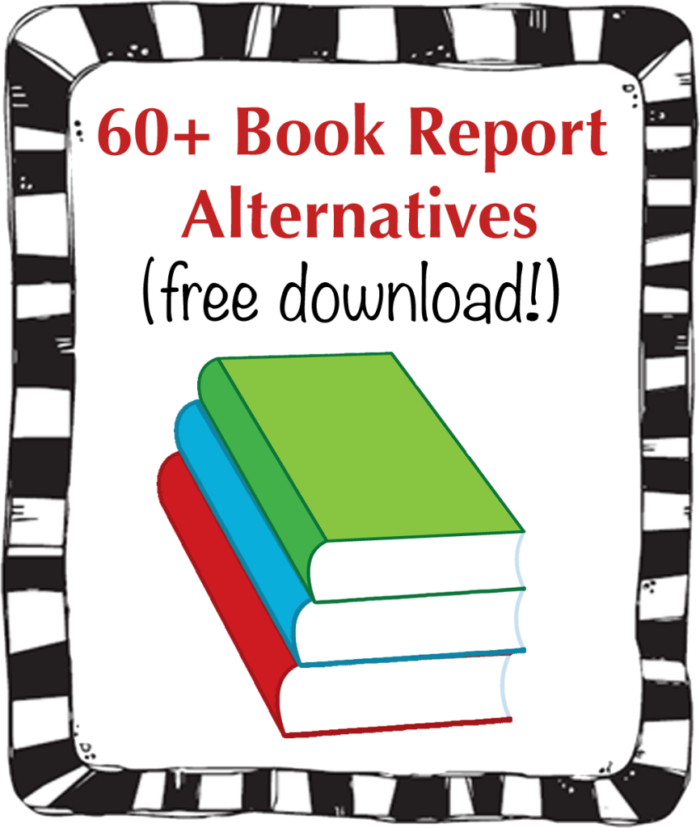
Book Report Alternatives
1. Choose a character from the book and create sentences for each letter of the alphabet. For example, A is for the APPLE Snow White ate. B is for the BEAUTY she shared with everyone.
2. Write a poem that explains the book and what you loved about it.
3. Create a diary as if you were one of the characters from the story.
4. Make a time line of the events in your book. Draw pictures for major events.
5. Write an alternate ending – one that makes sense for the story line, but did not take place.
6. Design a quiz for the book you read, and an answer sheet as well.
7. Make a crossword puzzle or word search using character names, events, and other words from the book.
8. Write a letter to one of the characters from the book, and write a reply as if you were the character.
9. Pretend you are a talk show host and interview your favorite character. Either write the interview down (your questions and your character’s answers), or do it “podcast” style like mentioned below.
10. Prepare a travel brochure to convince tourists to visit your character’s home town.
11. Write a news article about an event from the book.
12. Keep a list of new words you learned by reading your book. Use them each in a sentence.
13. Write an acrostic poem about the book using the letters in the title of the book.
14. Create a job listing for a character in the book. Then, create a resume for that character.
15. Read a book that has been made into a movie, then watch the movie. Draw a diagram doing compare/contrast.
16. Write a letter to the author of the book letting them know what you liked, as well as how you would have changed their story.
17. Compare and contrast two characters from the book.
18. Do some research on the area your book took place. Write 10 quick facts about it.
19. Tell (out loud or on paper) the story from a different point of view. For example, instead of telling it from Snow White’s POV, tell it from the Dwarves’ or the evil stepmother’s.
20. Use a Venn diagram to tell how you are alike (and different) from your favorite character in the book.
21. Plan a party based on the book: invitations, food, games, decorations, and even music choices.
21. Imagine you’re going to join your favorite character in the book. What will you pack? How will you get there? How long will you stay?
22. Write an obituary of your favorite character. Be sure to include who they left behind, as well as what they accomplished in their life.
23. Invite your favorite character from the book to dinner. What will you cook? How will you dress?
24. Create a new character, and add him or her to the story. What role will they play? How will they change the outcome?
25. Write the pros and cons of the book. What did you like and dislike? What would you change and why?
26. Write about a new adventure for the characters in the book. For example, instead of going into the woods, where does Snow White go? How does this change the entire story?
27. Make a diorama (think science fair project/tri-fold) describing the book and its time line.
28. Make up an alternative title for this book. Explain why you chose the new title and why the old one didn’t fit as well.
29. Create a dictionary using difficult words (and their definitions) from the book.
30. Make a list of the top 5 television shows and top 5 singers your favorite character would love. Explain.
31. Figure out which astrology sign your favorite characters from the book would be. Explain why you think they fit these signs.
32. Invite your favorite character to your talk show. What will you talk about?
33. Create a word collage using words from the book, character names, and even the title of your story.
34. Plan a dream vacation for your favorite character from the book. Where would they go? Why? Write an itinerary for the days they’ll be on vacation.
35. Create an award for the main characters of the book. What are the awards for?
36. Draw a picture of what you think your favorite character’s bedroom looks like. Do the same for your least favorite character.
Hands-On Alternatives to Book Reports
37. Create a life-sized model of your favorite character from the book. Use real fabric to create cut-out clothes for them.
38. Do a science experiment based on a character from the book. What did the character like to learn about? Make the experiment interesting to them.
39. Make a sculpture of one of the characters from the book.
40. Create a shoe box diagram about your book.
41. Make a banner out of cloth or a long roll of paper telling about your favorite parts from the book.
42. Nominate one of the characters for President. Design campaign billboards, and a catchphrase/slogan.
43. Design a model town like the one from the book. If they don’t talk about the town, design the house or other setting.
44. Put on a puppet show! Create puppets (even if they’re out of brown bags) of the characters from the book, and write and act out a play with them.
45. Create a scrapbook about the book.
46. Do a soap carving of a character (or animal) from the book. Parent supervision required!
47. Gather items described in the book and put them in a shadow box.
48. Design costumes that your book’s characters would have worn. You can do this on paper or with fabric!
49. Put together a visual book report collage using magazine photos/cut-outs.
50. Dress up and do a presentation about your book in full costume.
51. Design a bookmark about (and for!) your book.
52. Do a brown bag book report and collect items that tell about the book. For example, an apple (or a drawing or cut-out of one) for Snow White.
53. Make a mobile using a hanger or popsicle sticks, and magazine cut-outs or your own drawings, giving details about the book.
Book Report Alternatives Using Technology
54. Create a short video clip or podcast about the book (also known as a “bookcast”). Bookcast a review of the book you just read, being as creative as possible for your audience.
55. Create a commercial about your book.
56. Design a Power Point presentation telling all about the book.
57. Write an online review of the book, using a site like wetpaint.com. You can read reviews from other students, and share your book reviews as well. If you have a classroom or homeschool group, you can create a classroom book review wiki as well. Then, all of the students can add their own book reviews.
58. Create a movie poster advertising the book. You can create one online using a website like glogster.edu, or create one with actual poster board and markers. Be sure to include the title, author, key characters, etc.
59. Design a comic version of the book, using a program like PicMonkey online – or by using pen(cil) and paper.
Pssst… while you’re here, be sure to check out all of my PicMonkey tutorials , plus learn 17 Things You Didn’t Know You Could do With PicMonkey !
60. Pretend you are a TV reporter, and give a “live news report of a scene from the book.
61. Use bookwink.com (no longer valid) to create a “video book talk” letting other students know all about your book. Watch other videos to find new books to read!
62. Use YouTube to create a summary of the book – no spoilers!
Download this list in a FREE PRINTABLE by clicking below.
[purchase_link id=”16183″ style=”button” color=”red” text=”DOWNLOAD NOW”]
Leave a Reply Cancel reply
Your email address will not be published. Required fields are marked *
Save my name, email, and website in this browser for the next time I comment.
Welcome to Slap Dash Mom!

The ultimate destination for hassle-free cooking! Browse our collection of quick and easy recipes that are perfect for busy lifestyles.
Here I share all my favorite Weight Watchers recipes as well as my sure fire tips and tricks for getting & staying on track. I am a married mother of two. I am also a lover of smoosh faced pets, entrepreneurial thinking, real estate investment and anything in the color blue – literally :) I hope you enjoy!!
Never miss a recipe!
Popular recipes.

Weight Watchers Cheesecake – Zero Points

Weight Watchers Friendly Taco Casserole Recipe – 1 Smart Point FREESTYLE

Instant Pot Chicken Taco Soup | Zero SmartPoints Weight Watchers Freestyle

WeightWatchers Friendly Chicken Taco Casserole

Weight Watchers Friendly Breakfast Casserole – 1 SP Freestyle
Easter favorites.

White Chocolate Cupcakes With Honey Pistachio Frosting

Easy Easter Basket Cupcakes

Easy Yogurt Fruit Pops

Cake Mix Cookie Bars
Digital jar.

10 Book Report Alternatives Your Students Will Love to Complete
The children groan as you close the book and begin to give instructions…They know the dreaded book report is coming. When you were planning your novel unit , you likely included a project to wrap things up. However, many of these end up being nothing more than a colorful book report. So how do you find a post-novel activity that serves as book report alternatives?
Much like your pre-reading activities , wrapping up your novel study is a key part of making the learning stick. Making post-novel activities fun and engaging is a large piece of that. That's why I'm sharing some book report alternatives to help you think outside the box.
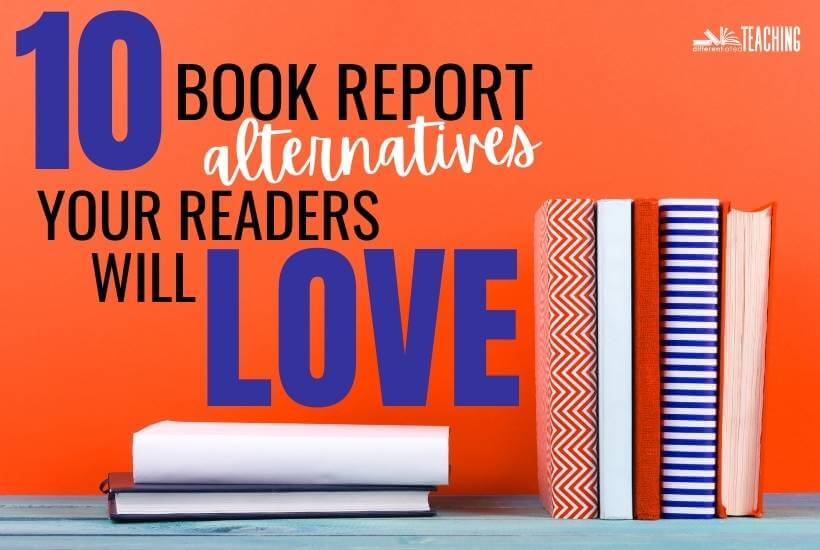
What you'll find on this page:
10 Novel Study Activities to Wrap up Your Unit
This list is designed with students in mind. I firmly believe there's no point in considering book report alternatives unless you're considering your learners. The students in your class need to have activities that excite them. That's why it is important to consider their interests and passions when you're trying to plan meaningful novel study activities. You'll also want to make sure you incorporate websites and tech tools that are engaging and build 21st Century skills.
With that being said, here's the list of my 10 favorite book report alternatives.
1. Have students extend the story instead of writing a book report.
This option is perfect for your creative writers and is a great fit for many popular novels. Ask students to write about what else happened in their own words.
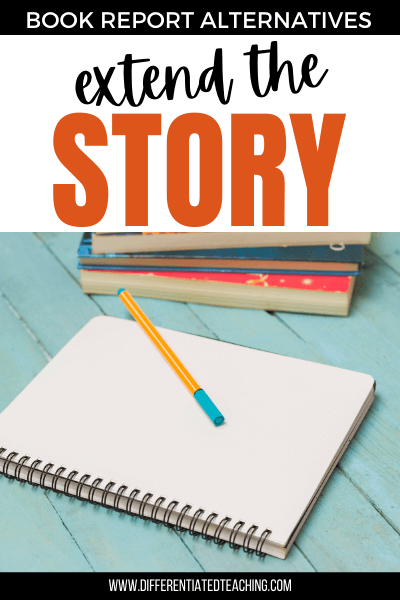
For some books, this might be adding a chapter that picks up where the story ends. However, that isn't the only option. Many books also have plot holes where students could use their knowledge of the plot to write a scene.
The benefit of taking this approach is it requires students to examine multiple various elements of the novel. They need to have a strong understanding of the plot to make their addition fit the story. Analyzing the plot can encourage students to step into the character's shoes. In turn, they can begin to empathize with characters at a deeper level.
They also need to spend time analyzing the author's writing style. Many times we forget to look at novel units as a chance to teach the author's craft. However, novels can easily serve as mentor texts for writing, too.
Alternatively, students could retell a piece of the book from the perspective of another character. They could even approach it from a totally different point of view. This can help students focus on the plot and feelings without the pressure of developing plot points.
2. Create a commercial as a post-novel activity.
A book commercial is a creative way to have students write about a book. It's different from a book report because the student is trying to persuade others to read the book, without giving away too much of the plot. By creating a short video, reluctant writers can share what they learned from the book.

If you decide to go this route, encourage students to include details about why they liked the book or what makes it stand out. Have them mention if there are any other books in this series or by this author that would be good for people who like this one.
Ideal for your budding filmmakers, ask students to create a visual summary about the best parts of the book. This might include having peers act these out, using stop-motion videography, or even using animation tools (like Powtoon ).
Your future marketing gurus may enjoy planning the target market or creating a sales pitch for the book. Similarly, they may use the author's message to explain how the book will change readers' lives.
Adding an imaginary or actual review can also add to their advertisement. Was there a movie made? They could compare their review to a movie review and evaluate how well the story was retold!
3. Have students create character text messages to wrap up their novel unit
Text messaging is a great way to communicate with friends and family, but what if we could use it as an alternative to book reports?
Creating text message threads between characters in a story is a great way to examine character relationships. It can also help students explore plot points from different perspectives. This option is perfect for students who struggle to write long passages, but it is also a great choice for students who struggle to be concise.
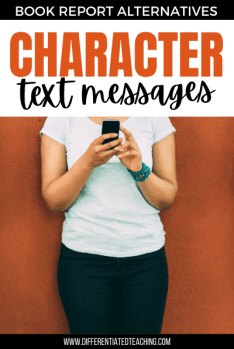
By creating a text conversation or a chat on social media, students can analyze the characters and their relationships differently than just describing them. They need to take the perspective of both characters in the conversation to create a believable text thread.
Helping them empathize with the characters will help your students evaluate the plot in a more approachable format than a full book report. Assign chapters to various literature circle groups. Their product can be creating a message that represents their section in detail.
Here are a few great online tools:
- Text Me! SMS Generator
- iFake Text Messages
- Messenger Chat Fake
4. Design a yearbook as a post-novel activity.
Designing a yearbook as an alternative to writing a book report is a great way to engage learners and provide them with a memorable post-novel activity. For this project, students will create their own yearbook that features personal photos of the characters, summaries of important events in the story, thoughts on what they learned from reading the novel, predictions for what might happen next in the story, and how it relates to real-life issues or problems that exist today.
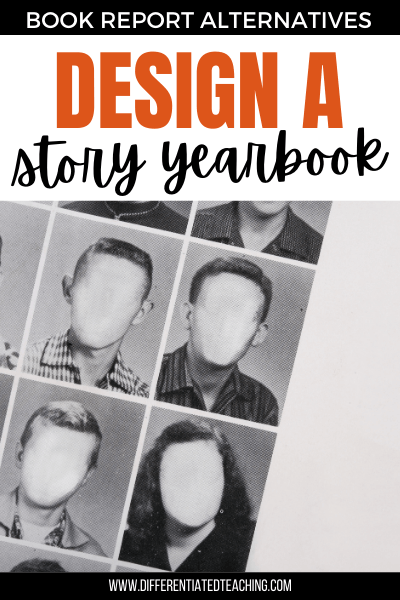
Creating yearbook pages for the characters will help students sum up their ideas in a short and punchy way. This works best with access to computers, but providing pictures can work for classes without access to technology.
This will help students reflect on the most important parts of the book and why they remember the characters. Drawing out the story elements will help the students analyze how the characters develop the plot.
Particularly creative students might want to write poems to include. This can use quotes and even retell important scenes.
5. Create book jackets as a book report alternative.
A book cover or jacket redesign can help students explain an important part of the plot while allowing their creativity to shine. Encouraging them to illustrate a scene for the front cover will help them take their favorite scene and show how that can encourage people to read the book.
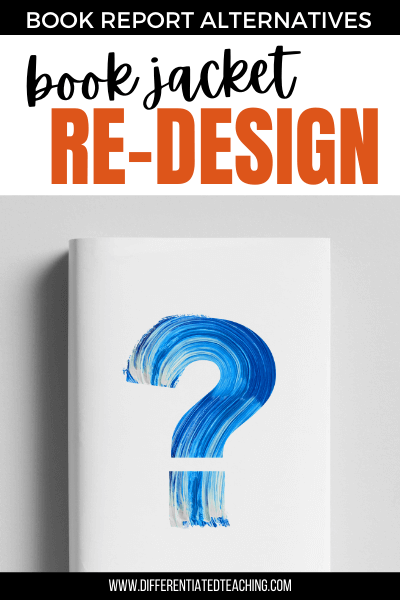
Symbolism is an important, higher-order skill. Allowing your students to put complex ideas into picture form will encourage them to grow their understanding of the plot. Additionally, using the text to create something new is an excellent example of synthesis!
For students who prefer to write, creating a new blurb with a cliffhanger would help them review the book and analyze the plot.
6. Instead of a book report, have students create a character social media profile.
Making a task relevant to students can be a challenge. Using social media opens opportunities for creative writing, graphic design, and acting for videos.
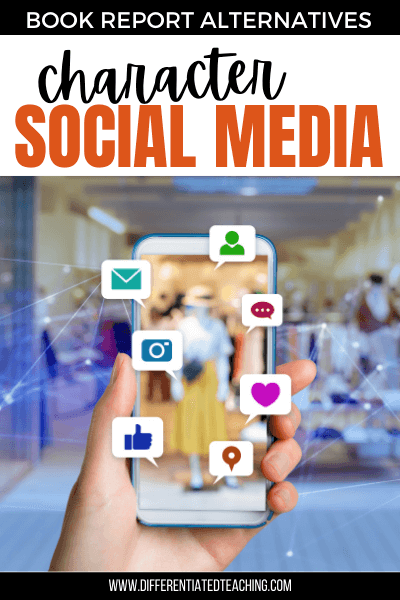
If your students want to focus on Facebook-style writing, they can write a long-form post with pictures and retell the story. Fakebook offers a great digital format for this. A more succinct option would be to ask them for a Tweet instead.
Students who prefer video could create a Snapchat story using pictures or a series of short clips for Tik Tok. Acting as the characters will make students engage with character analysis, copying their mannerisms and how they act.
7. Have students plan an interview for a post-novel activity.
Perfect for writers, an interview with a character can help them think of questions that need to be answered after they’ve finished the novel! Learning to take perspectives will help them analyze the character’s motivations and summarize it in a sound bite.

Instead of simply imagining and writing, students might prefer to work in pairs or small groups and directly ask the questions to their peers. The interviewer can create questions and develop ideas for the interviewees to role play and answer.
Alternatively, they could interview the author and imagine what they might say. You could even encourage them to try and directly contact the author – if they get a response, you can turn this into further analysis!
8. Write a parody after you finish the novel.
Perfect for musical students, writing a parody song of the story will help them focus on the main themes, summarize the content, and fit it into a different format.
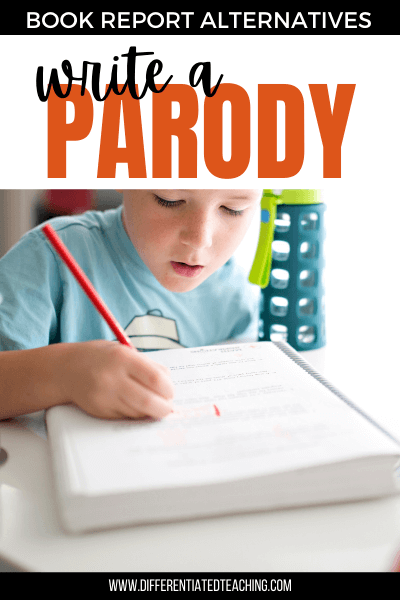
Using a popular song, they can rewrite the lyrics to tell the story from one character’s perspective or about the entire plot. If you have a student who loves to perform, they might even create a recording or play it live for their peers!
Teaching students to sequence the important events and how they cause each other is also easier with a song – you don’t have as much time to analyze, so they need to show causation in a clear and snappy way.
9. As a post-novel activity, let students create a comic or graphic novel
Comics and using pictures to explain can help students who struggle to put their ideas into words. You can provide a template for the students to use, pictures for them to base their ideas around, or just let them draw and write everything originally.
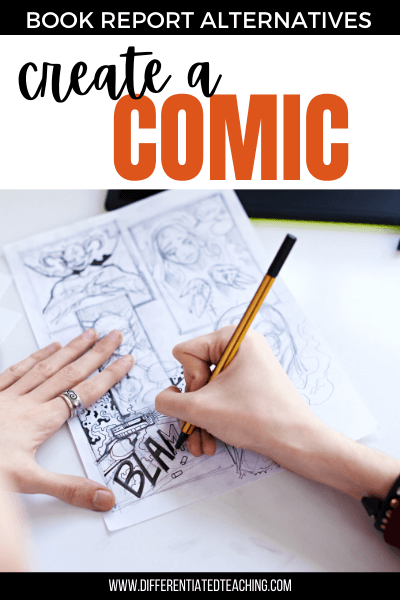
Learning to retell a story and sequence their ideas can help them creatively reimagine the story and use art to show what they think was most important. They could also create a symbol for a theme to show underlying, important ideas.
This can be turned into a whole class project by asking students in small groups to each retell a part of the story as a picture and then join them all together to create a giant comic strip. This will require a lot of space for the display!
10. To wrap up the book create a visual or written mind map
For a quick wrap-up activity, you can ask them to mind map the key ideas of the novel. This will help students remember the main events, link them together, and expand on the key ideas.
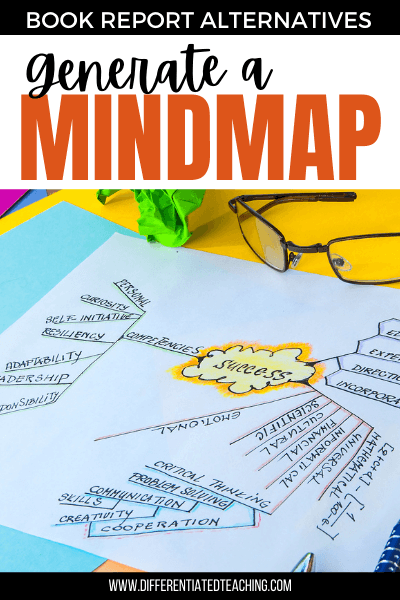
With effective modelling, you can show students how to bring ideas together and arrange them. For example, you could ask students to create a few sections – themes, problem, solution, characters, setting, and relationship. This will help organize and create connections between ideas.
Working in a group can also help students bring ideas together. Using chart paper will give students space to share ideas and develop understanding. If that isn’t available, you can ask students to put ideas on a post-it and create a post-it mind map on a table or wall.
Book reports aren't designed for today's student.
Although writing a book report as a post-novel activity might show what some students can remember, using a variety of tasks that encourage artistic and creative work will help all students show off what they’ve learned.
Summative assessment is important for showing that students have engaged with the novel and can help them evaluate and analyze. This is excellent for tracking your students' grades and identifying what they need to improve on.
These strategies can be a quick win for adding engagement and interest into your classroom novel unit.
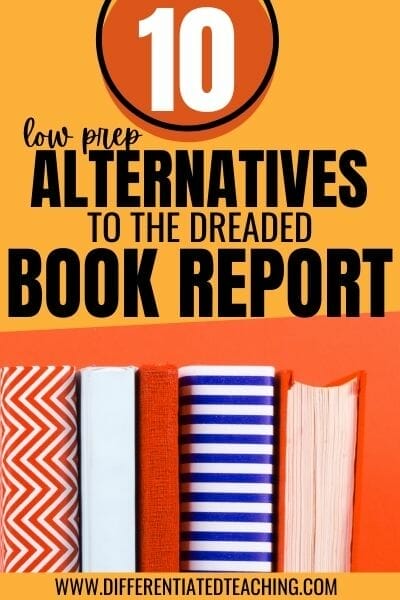
Planning your next novel study?
Grab my free Novel Study Planning Guide below.
- Our Mission
Beyond the Book Report: Ten Alternatives
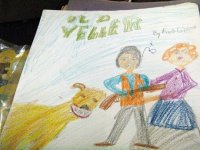
In my last post I described 10 ways to cultivate a love of reading in kids. I want to expand on that theme by suggesting 10 alternatives to the book report. I'm not a fan of book reports; I don't think they are an effective way for a student to demonstrate understanding of a book and I don't think they help students enjoy or appreciate reading.
Let's consider some activities that allow a student to show understanding of a book and that might be enjoyable. This selection of activities is also intended to meet the needs of different kinds of learners -- or to contribute to the development of skills beyond writing. I often allowed students choice in deciding how they wanted to respond to a book -- they could choose from a list like the one below.
1. The Graphic Novel: Students draw scenes from a selected part of the book-perhaps a scene that represents the beginning, middle and end if you're working on understanding chronology; or three scenes that depict how the main character changed. If the book is rich in setting, then asking them to illustrate where the story takes place can also be revealing. Drawing will help students remember or find details. Then you can also ask them to highlight or copy the textual evidence for their illustrations.
2. An Alternative Ending: Asking students to create an alternative ending to a book -- one that makes sense -- pushes them to really demonstrate an understanding of characters and plot. What makes a gripping novel is often that you don't know what's going to happen in the end. Asking students to diverge from but build on a writer's style is very hard -- and an exciting challenge for skilled readers.
3. A Sequel: Sequels are also fun for kids to write. How many of us have reached the end of a book and wanted more? This gives them an opportunity to predict what would happen next. It's also challenging because a sequel has to make sense; there must be a continuity of some elements of theme and plot. If there are other students who have read the same book, they can be the judges -- is this sequel believable? Students can write a few pages, a short chapter, or a whole book.
4. Diary of a Character: What might Professor Snape (of Harry Potter) have written in his diary? Students can select a character and compose a few pages -- or many pages -- of a diary. For fans of Diary of a Wimpy Kid they can emulate that author's style and include illustrations. Such an assignment reveals a student's understanding of the character and the genre of the personal narrative.
5. A Monologue: What might a major or minor character want to say? How might they say it? Students can take this in many directions. Again, this is another way for a student to communicate how she understands a character, as well as to practice speaking skills.
6. The Talk Show: When several students read the same book, they can put on a talk show for the class with each student representing a different character. The "host" prepares a list of questions to ask each guest, pushing the student to develop higher level thinking questions such as "Can you explain why you...?" or "What regrets do you have about..." Again, as you (the teacher) listen, you can assess how well each student understood the book.
7. Letter to the Author: If a book really moved a student, he might be interested in writing a letter to the author. There might be more information he'd like ("Did any of this really happen to you?") or he might want to share his reflections and thoughts about the book. It's no uncommon for authors to respond -- and that's a thrilling experience for a kid. This kind of assignment helps you assess how a student connected with a book and responded to it.
8. Review for Peers: This could be done in writing (and posted online somewhere including Amazon.com) or it could be shared verbally with a class. This is a way for students to practice persuasive writing and to share their opinions.
9. A New Cover: Creating a different cover for the book is a great project for artistic students. They might use traditional mediums -- paper, markers, and so on, or those with the skills and resources could create one using digital tools. This assignment is really a persuasive one: we all judge books by their covers, so how can students communicate their thoughts and feelings about a book through an image?
10. A Reading Guide: At the end of some novels there are a set of questions that are designed for a book club to use in discussion. This is a challenging project, but one that some readers love because it allows them to direct the conversations of others. In order to formulate good questions, they are required to have a deep understanding of the book. This activity is also great if you have book clubs or literature circles as students can provide their peers with this guide.
This is by no means an exhaustive list of alternatives to book reports, but I hope it's spurred some thinking about how to get students to respond to books they read.
What alternatives to book reports have you offered students? What would you like to try? Share with us in the comments' section below.
English Journal
Fifty alternatives to the book report.
by Diana Mitchell
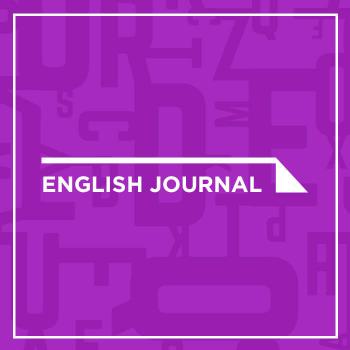
Get this article
Description.
Offers 50 diverse suggestions intended to offer students new ways to think about a piece of literature, new directions to explore, and ways to respond with greater depth to the books they read.
Related Resources
- Lesson Plans
- Professional Library
In this article, Versaci details the many merits of using comics and graphic novels in the classroom, suggests how they can be integrated into historical and social issues units, and recommends several titles.
- Print this resource
Explore Resources by Grade
- Kindergarten K
- Personalized Learning
Creative Alternatives to Book Reports
Book reports are a valuable tool for assessing students’ understanding of independent reading, but writing report after report can become rote for students—and reading them can be equally tedious for educators. Fortunately, there are a plethora of alternative methods to accomplish the same goal. Take a look at these fun and effective alternatives to book reports and get your students (and yourself) out of the report rut.
Movie pitch
Making movies based on popular books is a Hollywood staple. Have students create an “elevator pitch” (i.e., a pitch delivered in the time it would take to ride an elevator) that explains to a producer why the book would make a good movie, give suggestions about who should play the characters, and identify an element that might need to change for the movie version. This activity obviously works best with books that have not already been made into movies.
Book/movie comparison
If students read a book has already been made into a movie, they can write a comparison between the book and the movie. They should include information about key changes from the book and develop ideas about why these changes were made and how effective they were.
Character portrait
Have students create a portrait of a character from the book they read. The portrait should be made up of words and symbols that represent the character. For example, if a character is a computer whiz, the outline of her face might be made up of ones and zeros like binary code, and her eyes might be computer screens. This is a great way to integrate the arts into a literacy lesson.
New character introduction
Have students introduce a new character into the book they read. They should explain who the character is, which book characters the new character would interact with, what role the new character would play (Advisor? Foil? Comic relief?), and how the new character would affect the rest of the book.
Book cover analysis/design
Have students take a close look at several book covers and make a list of common elements they see, such as the title, author, images, book blurbs, etc. They can also list some examples that were effective and some that were less successful. Then, have students design a cover for the book they read. They should be able to explain the elements they chose to include and how they relate to the book.

Blind date with a book
Related to designing a book cover, give students plain paper that is not see-through, such as butcher paper, and have them each wrap the book they read like a present. Then have them write words or short phrases that describe the book on the paper without giving away the title of the book or its author (and, of course, no spoilers). Place all the books on a shelf and let students browse through the offerings and select the next book they want to read based on the words and phrases on the cover. You could also make this an ongoing project and designate shelf space in the library for “blind date” books.
Interview with a character
Sometimes a character in a book feels so real that you can almost imagine talking to them. Have students write questions they would ask a character in the book they read. When they have finished writing the questions, have them answer these from the perspective of the character. If a video camera is available, students could create a mock talk show with literary characters as the interviewed guests.
Book trailer
Almost everybody has seen a movie trailer that made them really want to see the movie. Students can create a similar trailer for the book they read. There are many choices for free video editing software—including WeVideo, Windows Movie Maker, and iMovie—that students can use to create transitions, add special effects, edit out mistakes, and add audio. This type of alternative book report also helps develop 21st-century digital skills!
Book club questions
Some books have a section in the back with questions for facilitating discussion at a book club. In this vein, have students write a section of discussion questions for the book they read. Remind them that discussion questions don’t have an easy answer. Instead, they should enable people to express their own perspectives while answering the question.
Debate time/"The hard sell"
Have students create a persuasive argument—without spoilers—about why other students should read the book. To make it more exciting, have one student be the “chooser” and let two students take turns trying to persuade that student. Encourage the persuaders to adapt their arguments based on which classmate they are trying to persuade.
Have students create a podcast relating to their book. They could podcast from the perspective of a character or retell the book’s story in a series of short episodes. Students can easily record the audio for their podcasts on a computer or smartphone. They can also use a free sound editing program—such as Audacity or GarageBand—to edit their recording. Then, they can upload the audio file to your school website to share with colleagues and parents. If students aren’t familiar with podcasts, they can listen to podcasts such as Youth Radio and StoryCorps before creating their own.
Comic strip or picture book
Have students condense the book they read into a comic strip/graphic novel or a picture book. Challenge them to tell the whole story in the new format, not just one section of the book. If appropriate, students could read their books to younger students.
Selecting the right excerpt from a book to share with an audience can be challenging. You might select an excerpt that gives a good sense of a particular character, or one that showcases the author’s writing style, or even one that ends on a cliffhanger so your audience will have to pick up the book to see what happens next. Have students select an excerpt from their book to read to the class. Ask them to write an explanation of why they selected that excerpt and how it relates to the book as a whole.
Alternate ending
Have you ever loved a book, but wished it ended differently? Give students the chance to get the resolution they want by rewriting the ending of the book they read. Then, have them explain why they made the change they did.
Roller coaster
Have students analyze the plot of the book they read by creating a roller coaster on a large piece of paper. The coaster should have the five stages of a plot from Freytag’s pyramid: exposition, rising action, climax, falling action, and denouement. Students should draw cars along the roller coaster that use words and/or symbols to visually explain each part of the book.
Sequel pitch
Sometimes a book is so good, you just don’t want to say goodbye to its characters. Have students pitch an idea for a sequel to the book they read as if they were speaking to the editor. They should include a basic outline of the plot, any new characters, and an explanation of why the book deserves a sequel. Taking this a step further, you could have students write the first chapter of the sequel after making their pitch.
Another point of view
Point of view is a key literary device. Have students retell a part of the book they read from a different point of view. They may choose to use first-person point of view or third-person narration to switch to the perspective of a different character. This is an opportunity for students to explore the unsaid motivations of secondary characters.
Board game
Have students create a board game about the book they read. For example, the game could advance players when they answer a question about the book or move players backward or forward based on problems and solutions from the book. In her article "Fifty Alternatives to the Book Report," Diana Mitchell writes, "Students tire of responding to novels in the same ways. They want new ways to think about a piece of literature and new ways to dig into it." This lesson invites students to respond to texts in a new way while also helping them focus on key points in their books.
You Might Also Like
13 Teacher Tools That Combine Artificial Intelligence and Human Intelligence
Unlock the power of Human Intelligence alongside Artificial Intelligence in the classroom. Explore how digital tools aid ELA teachers in accelerating student learning while reclaiming valuable classroom time. Discover the harmony between AI and HI for enhanced student outcomes.
5 Documentaries Every Educator Should Watch
Documentary films are primed to make a real impact on the educational landscape. Here are five documentaries that every educator should watch.
The Road to Equity: Helping Multilingual Learners Grow from Spectators to Players
Join Aurora Daniels on the journey toward educational equity for multilingual learners in rural communities. This blog post explores practical strategies, insight, and collaborative approaches to empower students and foster inclusive classrooms. Discover the pivotal role of every teacher in embracing linguistic diversity and fostering student engagement.
A Cambium Learning® Group Brand
Paula Kluth's Differentiation Daily
a new idea each day to help teachers reach and teach all learners in K-12 classrooms
- Reading/Lang. Arts
- Social Studies
- Foreign Lang.
- Books & Products
50 alternatives to the book report
Providing choices and alternatives to the “ways things are done around here” is not only a strategy for differentiating instruction but a way to encourage students to “show up” differently in the classroom and demonstrate new skills and competencies. This post at Sharing and Collaboration: English Classroom on 50 Alternatives to the Book Report may inspire you even if you are not an English teacher. It may help you to consider 50 alternatives to some common practice in your own classroom. 5o alternatives to the research paper? 50 alternatives to lab reports? 50 alternatives to chapter tests?
My Differentiation Books
Copyright © 2024 · Differentiation Daily · Design by Designer Blogs · Proudly powered by WordPress
Return to top of page

25 Alternatives to a Traditional Book Report

The words “book report” can elicit groans from students at any age. Writing a summary of a book isn’t necessarily the most effective way to demonstrate learning in the digital age. With summary book websites online, the traditional book report is no longer an enriching task. Here are 25 alternatives to the traditional book report for students to demonstrate their comprehension and deeper understanding of a book.
25 Book Report Alternatives
- Interview a character from the book. Write a series of questions and answers from the protagonist or antagonist. You can even try focusing on a flat character.
- Write a diary or journal from the main character’s point of view. This can be done in a physical format or through blog posts online. Try a student-friendly blog site like kidblog.org or edublogs.org .
- Create a stop-motion video of major scenes from the book. Here are some tutorials on using stop motion in education.
- Draw a comic book version of the book.
- Give a book talk convincing someone to check out this book from a library.
- Write a script for a scene or scenes from the book. Cast famous actors as the characters.
- Create a playlist of songs that go with important moments or characters in the book. Explain the reason you chose each song.
- Design your own Google Lit Trip for the novel.
- Make a book jacket for the novel. Look at traditional book jackets for inspiration.
- Write the climax of the story from a different character’s point of view. (If it’s in the third person, try telling it in first person or vice versa.)
- Write an alternate ending for the story.
- Make a picture book or children’s version of your novel.
- Choose one of the themes (lessons) of the book and write about how it relates to current events.
- Write a narrative poem based on the plot of the novel.
- Make a scrapbook for one of the characters in the book.
- Explain why this book should or should not be read by students in your grade level. Back up your argument with specific evidence from the text.
- Create a glossary of vocabulary words from the book. Use images and specific sentences and context from the novel.
- Read a related book (same author, related theme, same series) and compare and contrast them in a short essay or Venn diagram.
- Create an online Jeopardy game based on themes, characters, plot questions, and other elements from the novel.
- Write a resume for the main character of the book. Use what you know about the character to make inferences to their experience and qualifications.
- If the main character is a child, write a short story about an event that happens in their adult life. If the main character is an adult, imagine an event that happened in their childhood and write about it.
- Create a social media profile (Instagram, Facebook, Twitter, Snapchat) and some posts for a character in the book. Use these templates or create real pages that comply with terms of service.
- Design the setting in Minecraft. Build a character’s home, neighborhood, city, or even country.
- Make a family tree for the main character of your novel. Create some artifacts (birth certificates, newspaper articles, scrapbook entries, photographs, etc.)
- Write a letter to the author suggesting changes in the novel.
These 25 ideas will have your student excited about reading and sharing what they learned from their latest book!
Of course, there is nothing wrong with writing a traditional book report, either. Check out this link for a lesson for middle schoolers on writing a book report.
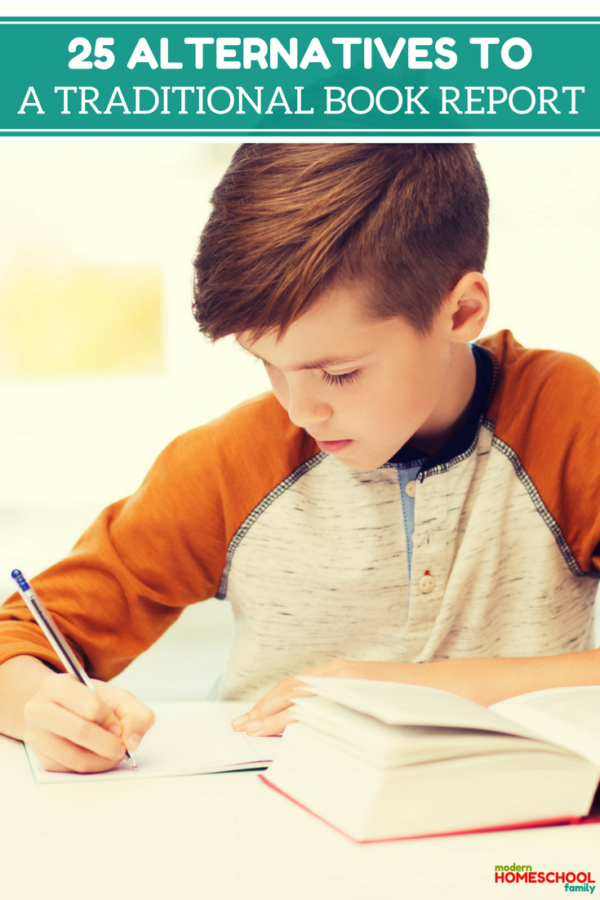
Also published on Medium .
RELATED POSTS
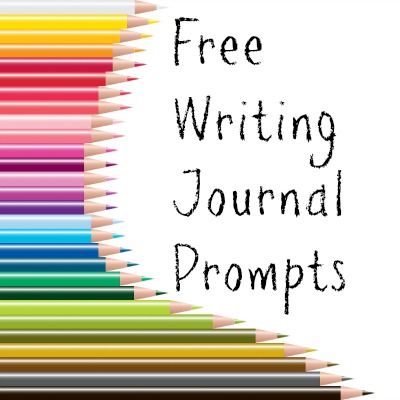
Free Writing Journal Prompts
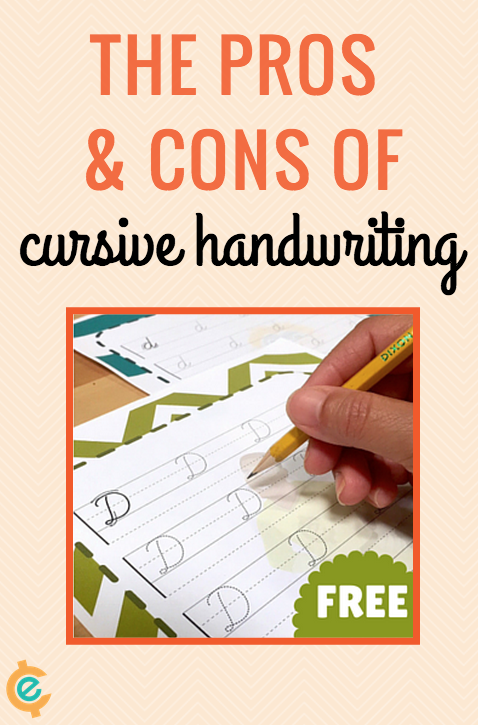
The Pros & Cons of Cursive Handwriting

The Four Components of Really Good Writing
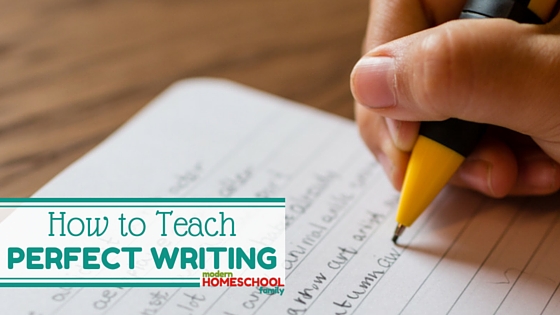
How to Teach Perfect Writing

31 Writing Prompts for Teens
Leave a reply cancel reply.
Your email address will not be published. Required fields are marked *
JavaScript seems to be disabled in your browser. For the best experience on our site, be sure to turn on Javascript in your browser.
We use cookies for performance, analytics and marketing. By using this site, you agree to our use of cookies. For more information, view our Privacy Policy .
- Request a Catalog
- Create New Customer
- Create New School Account

# Type at least 3 character to search # Hit enter to search
- Blogs about homeschooling
Great Books Deserve Great Projects: 7 Alternatives to Book Reports

- Feb 25, 2021
Do you remember writing book reports as a kid? I do.
Do you remember what books you wrote about? I don’t.
Why is that?
Let’s be perfectly honest: A book report is boring with a capital B. They are boring to write, and I can assure you from a teacher’s point of view, they are boring to read. It’s really a shame, too, because more often than not, the books are wonderful!
Because a great book deserves a great project, we need alternatives to traditional book reports.
I remember squealing with joy as a new English teacher when I discovered this idea of outside-the-box book reports. My students did, too. Each time I gave an alternative book report assignment, excitement grew in the classroom with calls of “I’m going to choose this one!” and “I can’t choose. They are all so good!”
Over the years, I ate food that represented symbols, listened to monologues, watched skits, poured over diaries, and repeatedly saw students engaging, analyzing, and enjoying literature.
Now, as a homeschooling mom, I get to experience those same experiences and joy with my own children. Each time my daughter finishes a book from her BookShark Reading with History curriculum , she completes an alternative to a book report.
These creative projects allow her to deep dive a little more deeply into the novel and continue to build on all sorts of skills — all while having a lot of fun.
Sharing and discussing projects is one of the most important aspects of these alternate book reports. So encourage your student to talk about what they created, telling why and how it’s relevant to the novel they read. This might look like an informal presentation around the kitchen table or a more formal speech. Videotaping projects can also be a lot of fun and a great way for students to practice public speaking.
I’ve also found children and teens relish being able to choose which project they do, so give them a list like the seven options below, and let them take the lead.
1. Write a New Ending or Fan Fiction
Does the book leave you hanging or wishing things worked out differently? Does it inspire you to write your own story?
Write an alternative ending to the novel you read. Make sure to include details from the original telling and change it in a way that makes sense.
You can also use the author’s style and writing to inspire your writing. Write a retelling of the story or create a spin-off from the perspective of a particular character's point of view.
2. Create a Game
Use the setting, conflicts, and characters to create a game. Using a favorite board or card game as inspiration, design the game board, questions, and even the game pieces to show your understanding of the novel and help others learn all about it.
3. Cook or Bake
There are many ways to go about creating a food project. Answer any of the following questions to get started.
If the main character were a food, what food would they be and why?
What do foods in the novel symbolize?
What recipes are important to the characters or culture?
You can also create an edible scene that's integral to the story. After you present it, you can eat it.
4. Pack a Suitcase

These items might be things someone would truly put in a suitcase, like a favorite shirt, book, or journal, or they could be more figurative like the ocean, a pet, or a particular dream.
5. Interview a Character
The main character of a book has a lot to share. Secondary characters do too.
Choose a favorite character in the novel and interview them like one might for a magazine or news show. Write out questions and answers that show your understanding of the character.
6. Create a Graphic Novel or Comic Strip
Turn an important scene, your favorite part, or the entire novel (condensed) into a graphic novel or comic strip. Use artistic license and details from the text to create the characters, setting, and important details.
7. Create a Social Media Page or Profile
If a character in your novel had a Twitter or Instagram profile...
What would they post?
What types of things would they share?
Who would be their friends or followers?
What might their profile look like and say.
What hashtags would they use?
Create a social media profile (either digitally or on paper) for your character, using details from the novel to stay true to who they are.
Use these book-based project ideas to inspire your own alternatives to book reports. I bet your children can come up with brilliant project ideas on their own. The sky's the limit, and each book lends itself to different projects.
The books we read deserve projects that reflect the same delight we had when reading the intriguing characters, detailed settings, and twisting plot lines. You don’t have to settle for another dull book report!

About the Author

Kelly left teaching middle and high school English to homeschool her children and reclaim how she and her family spent their time. Followers of interest-led learning, her family's days rarely look the same, but they tend to include a lot of books, art supplies, and time outside.
Kelly facilitates local writing circles for women and children and blogs about nurturing the love of learning on her blog, Curiosity Encouraged . She loves to journal, read memoirs, hike, and travel. She seeks quiet mornings and good coffee daily.
Posted in Reading
- Homeschooling
- Middle School
- High School

Five Alternatives to Book Reports Your Students Will Love
Book reports and summaries are a thing of the past. Engage your middle and high school students with five book report alternatives that will leave them asking for more and, most importantly, building vital reading and analysis skills along the way.

1. Assign one pagers at the end of a novel.

One pagers are engaging, allow for creativity, and lead to higher level thinking and analysis. Assigning a one pager is easy and works for any novel. Follow these simple guidelines:
Make it standards based: choose a standard to focus on, and design the content of the one pager around that standard. For example, these directions help students to master standard RL3:

Grade the learning, not the art. While I require my students to fill the blank space of their one pagers, I make it clear that students are not graded on their artistic ability. Then, I give suggestions for filling the blank space that do not require artistic ability: magazine cutouts, color, or filling blank space with powerful words and quotes.
Share models and a rubric with students so expectations are clear.

2. Make paper airplanes.

Paper airplanes are not just for kids to toss around when the teacher is not looking. They can also provide a fun alternative to book reports. Here’s how:
Instruct students to fold a paper airplane.
On the outside of the plane, instruct students to draw the plane’s windows with the protagonists on one side and the antagonists on the other. Instruct students to label each character and give a brief description of each.
On the inside of the plane, instruct students to write an analysis of the characters. How did the characters change throughout the novel? How were the characters impacted by (the plot, the setting, the conflict, etc. )? How do the characters affect each other?
Require students to back up their analysis with text based evidence, just like they would in a more traditional essay.
On the day airplanes are due, instruct students to fly their planes to a classmate (you might want to model a proper flight vs. an aggressive flight!). Students read their classmate's analysis, then share one fact they learned about the characters with the rest of the class. Allow students to make several "flights" so students can hear a wide range of perspectives.
If you want to save time on making a paper airplane book report assignment, you can grab my Best Ever Reading Response project set here , which includes four other projects plus Paper Airplane Book Report instructions, a rubric, and an airplane template that makes implementing this project easy!

3. Make it a book talk.

Book talks are the perfect interactive alternative to a traditional book report. Book talks give students an authentic audience, motivation to succeed, and require higher level thinking that can help push students to be more analytical in response to their reading.
Book talks can be implemented in several ways:
Students can prepare their book talks ahead of time, then sign up for times to present their book talks to the class. Require students to bring their book on the day they give their talk. The great side effect of book talks is that kids in the audience get interested in new books!
Students can complete book talks speed dating style. Ask students to complete this form:

Line up chairs in the classroom so students are facing each other with half of the class on one side and half on the other. Set a timer for five minutes and instruct students to give their book talks to and listen to the book talk of the person sitting across from them. When the timer is finished, instruct students on one side to shift one seat to the right. The student on one end will move to the beginning of the row so each student has a new partner. Reset the five minute timer and repeat the book talks. When the timer is up, the same row shifts to the right again. Repeat as many times as you see fit.
Do FlipGrid Book talks. Students can use FlipGrid to record their book talk using laptop cameras, their phones, or iPads. This is a great way to save class time (you can show selected book talks or the book talks of students who volunteer--watch the rest for grading outside of class). It's also a great alternative for students who are not comfortable getting in front of the class for their book talks.
4. Create book trailers using iMovie.

Want instant engagement? Offer book trailers as a culminating book project. iMovie makes it SO easy. Students can use phones or iPads to create a professional looking book trailer.
To create a book trailer, students must first choose a design template from iMovie:

Next, students will complete a storyboard for their book trailer. To create storyboards, students will need images and videos that connect to their novels.

For the best storyboards, instruct students to follow these simple steps:
Choose a focus for your book trailer. Entice your audience to read your novel by hinting at major themes that readers will take away. Highlight characters and conflicts that viewers will be able to connect with.
Next, examine the titles of the story board. Brainstorm titles that will help to tell the story of your novel with a focus on themes, relatable characters, and conflict.
Last, brainstorm a list of images and videos you will need to capture. The images and videos will show for a certain number of seconds indicated by iMovie. Be sure to limit your videos to indicated seconds.
Begin taking pictures and videos!
Put it all together. Write your title and subtitles. Insert pictures and images, and choose audio.
Preview your book trailer and revise as needed, adding or changing pictures and video and editing grammar.
After students finish their book trailers, have a viewing party complete with books and popcorn. Beware: students will want to read more books after viewing their classmates' trailers!
5. Create professional looking book covers using Canva.

If you haven't used Canva in the classroom--go, right now! Canva is an amazing design tool that allows teachers and students (or the average Joe) to design anything from posters to greeting cards. They also have the option of creating book covers!
To create book covers in Canva, visit the Canva website linked here . Create an account if you don't already have one. Click on Templates and do a search for Book Covers. Choose one of the free options (there are LOTS of great free options--there is no need to purchase templates or images). Start editing!
In order for your students to create a book cover on Canva, they will need to create a Canva account using their email. Make sure this works for your district (check FERPA requirements for using outside apps--in my school, I share the website with admin before using anything with my students).
Recommendations for implementing a standards-based book cover project:
Master standard RL 2: Student's book cover must reflect the theme of the novel. The back of the cover must include an objective summary of the text.
Master standard RL 3: Student's book cover must reflect the interaction of at least two different elements of the novel. For example, the cover might show how characters are affected by the setting or by a major event (with no spoilers!).
Master standard RL 6: Student's book cover must reflect the development of two different characters' points of view. For example, the front might reveal one character's point of view and the back another.
Display book covers in your classroom to entice your readers to read even more!
With a little creativity, we can engage students to analyze their texts in more meaningful, interactive ways. Try one of the five alternatives to book reports and let us know how it goes! Share your reflections, comments, questions, and suggestions below. Enjoy!
Want to save time and implement some fun alternatives to book reports? Check out my Best Ever Reading Response Projects here .
- Independent Reading
Recent Posts
Creating a Digital Book Tasting
Reading Brings Us Closer: How to Implement a Community Read Aloud
5 Alternatives to Traditional Reading Comprehension Questions
Cool article, I liked it because it allows you to expand your boundaries when you are a student, so to speak, to fill your life with something else besides studying, because when I was a student, my hobby, or rather my skateboarder vector , lost its relevance, I thought that I would not be able to combine these two activities, and that was my mistake, only after graduation did I realise that I could do not only skateboarding, but also other things, and not devote all my time to my studies.
Here's the link to the rubric I used with my students: https://docs.google.com/document/d/1ElgFpsm7MZ8_w1vscYRAxmkPlFl7kKkLeXC-QHBRezY/edit?usp=sharing
I hope this helps! Enjoy!
Do you have a rubric for the book trailer? I looked on TPT, but couldn't find this activity. I think my 8th graders would like this choice; I'm hoping to see what you already have created. Thanks!

Jan 21. 2019

I never wrote a book report for In Grandma’s Attic , but nearly thirty years later, I still remember Sarah Jane and Mabel’s antics. This staying power of stories is what makes book reports unnecessary.
What’s the purpose of a book report, anyway?
A classroom teacher needs to make sure each student actually read the book. She can’t have an in-depth conversation about the book with every student. So a book report works in that case.
But the homeschool parent—who has just finished reading aloud a book alongside her child—has the luxury of meaningful conversations about the books.
How Do You Discuss a Book?
As parent-teachers, we tend to make book discussions complicated. We overdrill vocabulary or approach questions as a tool for comprehension, rather than an invitation to talk. But book discussions are meant to be a natural, back-and-forth exchange.
Not sure where to start? Your Sonlight Instructor’s Guide is ready to walk you through each book it schedules, offering conversation prompts, comprehension questions, and cultural and historical context.

7 Book Report Alternatives
Beyond discussions, there are times when you may want a hands-on approach. These ideas can help.
Interview a Character
Invite your children to write down questions they would ask when interviewing a book character. Encourage them to delve into the backstories of characters and contemplate their motivations. Your kids could even compose answers to the interview questions and act it out in a mock talk show format.
Create a LEGO Scene
Ask your students to recreate a key scene from a book using LEGO bricks. Or have them set up several smaller scenes, and let the LEGO minifigures progress through each scene sequentially.
Sketch a Storyboard or Comic Book
Kids with an artistic bent will have fun creating storyboards that recap entire books or individual chapters. They can be as simple and sequential—or as a colorful and complex—as desired. In the process, kids are forced to differentiate between minor details and those which are critical to the overall plot.
Stage a Skit or Dramatic Reading
This idea works especially well for multiple ages, since each student can interpret his part differently. Bonus: Since your kids will have to imagine themselves in the shoes of each character, they practice empathy.
Cook a Book-inspired Dish
This idea scales well as children get older. You can help younger children cook a simple recipe related to the story. Older kids can take on the challenge of creating—and serving—an entire book-inspired meal.
Record a Commercial
Create commercials to advertise the book. Produce these in video format or in audio as if for radio or a podcast.
Write a Newspaper Article
This is a creative way for kids to work together. Younger kids can provide illustrations, and older kids can write about scenes from the book. Compile the results into mini newspaper!
Trust the Process
As you read together with your kids, don’t complicate it. Give them freedom to expand on what they’ve read with the book report alternatives above, but resist the urge to over-explain. Trust the simplicity of the read-aloud process !
Experience a literature-rich education today—FREE!

Discover how a literature-based curriculum can ignite your children’s passion to learn. Experience the Sonlight difference today: the best of both Charlotte Mason and Classical styles, strong academics, fully planned Instructor’s Guides, and curriculum Advisors to help you out. It’s everything you need to succeed. Guaranteed.
Choose the living books curriculum you’re guaranteed to love today.
Test-drive Sonlight for FREE and see if this homeschool curriculum is right for your family. Learn more .
About the Author
Gina Munsey is a Mexico-born, Eastern Europe-raised missionary kid who ended up in Nashville, Tennessee. A blogger for 16+ years, editor, magazine contributor, co-op teacher, and writer who has only completed four chapters of her languishing memoir, Gina spends her days full of coffee and adventures while helping her asynchronous daughter with Chinese homework. You can find Gina at oaxacaborn.com , or in the middle of [home]school surrounded by stacks and stacks of books.
Related Posts

Sonlight Curriculum
Sonlight is a complete, literature-based, Christian homeschool curriculum with every subject for students from preschool through high school. Our curriculum uses a variety of materials to deliver an engaging and complete education that extends beyond textbooks and memorization: literary fiction and nonfiction, biographies, illustrations, and hands-on experiments. These resources come with thorough lesson plans and notes, so that you can enjoy successful homeschooling. Customers who buy from Sonlight enjoy a liberal arts education that produces critical thinkers who are ambassadors for Christ with a heart for the world.
Leave a Comment Cancel Reply
Save my name, email, and website in this browser for the next time I comment.
This site uses Akismet to reduce spam. Learn how your comment data is processed .
Prepare – Plan – Check-In!
You can finally accomplish everything you have on your homeschooling plate (without feeling stretched thin or pulling your hair out).
Want a FREE Surefire Way to Get More Done with Ease and Grace?
Use the well planned gal 3 simple steps to homeschool organized.
- Kindergarten
- Accessories
- Entertainment
- PCs & Components
- Wi-Fi & Networks
- Newsletters
- Digital Magazine – Subscribe
- Digital Magazine – Log in
- Smart Answers
- Best laptops
- Best antivirus
- Best monitors
- Laptop deals
- Desktop PC deals
When you purchase through links in our articles, we may earn a small commission. This doesn't affect our editorial independence .
Best PDF editors 2024: Our top picks

It’s likely that you regularly come across or work with PDF files—they’re ubiquitous in our modern cross-platform world. Most of the time, when viewing a PDF, you can enjoy free software that allows you to read or comment on these files. But what if you need to edit them as well? That’s where a PDF editor comes in.
The best PDF editors allows you to edit, create, alter, and convert PDF files just like you would with any other text document. Adobe Acrobat is the most famous option for most people. But while it’s excellent both in features and utility, it’s also pretty expensive. Thankfully, in recent years a whole host of third-party PDF editors have sprung up in order to provide less expensive alternatives.
Here at PCWorld we’ve tested many of these top PDF editors and curated a list of the very best. With different use cases in mind, we’ve included picks for the best overall, best budget option, and even a recommendation for the best free PDF editor—because sometimes you just don’t want to pay for the basics. Check out our recommendations below to find the best PDF editor for you.
Update 01/22/2023: Check out our latest review of PDF-XChange . It isn’t as comprehensive as Adobe Acrobat Pro, but PDF-XChange still has all of the necessary tools for editing at an affordable price.
Also, be sure to take a look at our new review of PDF24 . This free PDF editor comes with a lot of features, but it’s held back by an overcomplicated interface.
EaseUS PDF Editor – Edit, Convert, Compress & Protect PDFs
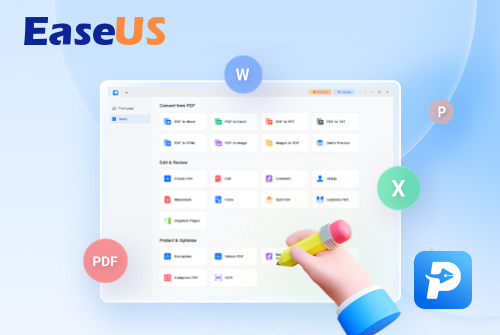
Integrate PDF maker, PDF editor, PDF converter, and PDF reader in one full pack with all the basics you need. The clean interface simplifies your PDF work to edit, convert, comment, annotate, merge, split, background, page, watermark, sign PDFs, or fill forms. Your PDF workloads are down by batch processing efficiently. Now 25% OFF Exclusive Code: PCWORLD25 Free Download>
Adobe Acrobat Pro – Best overall
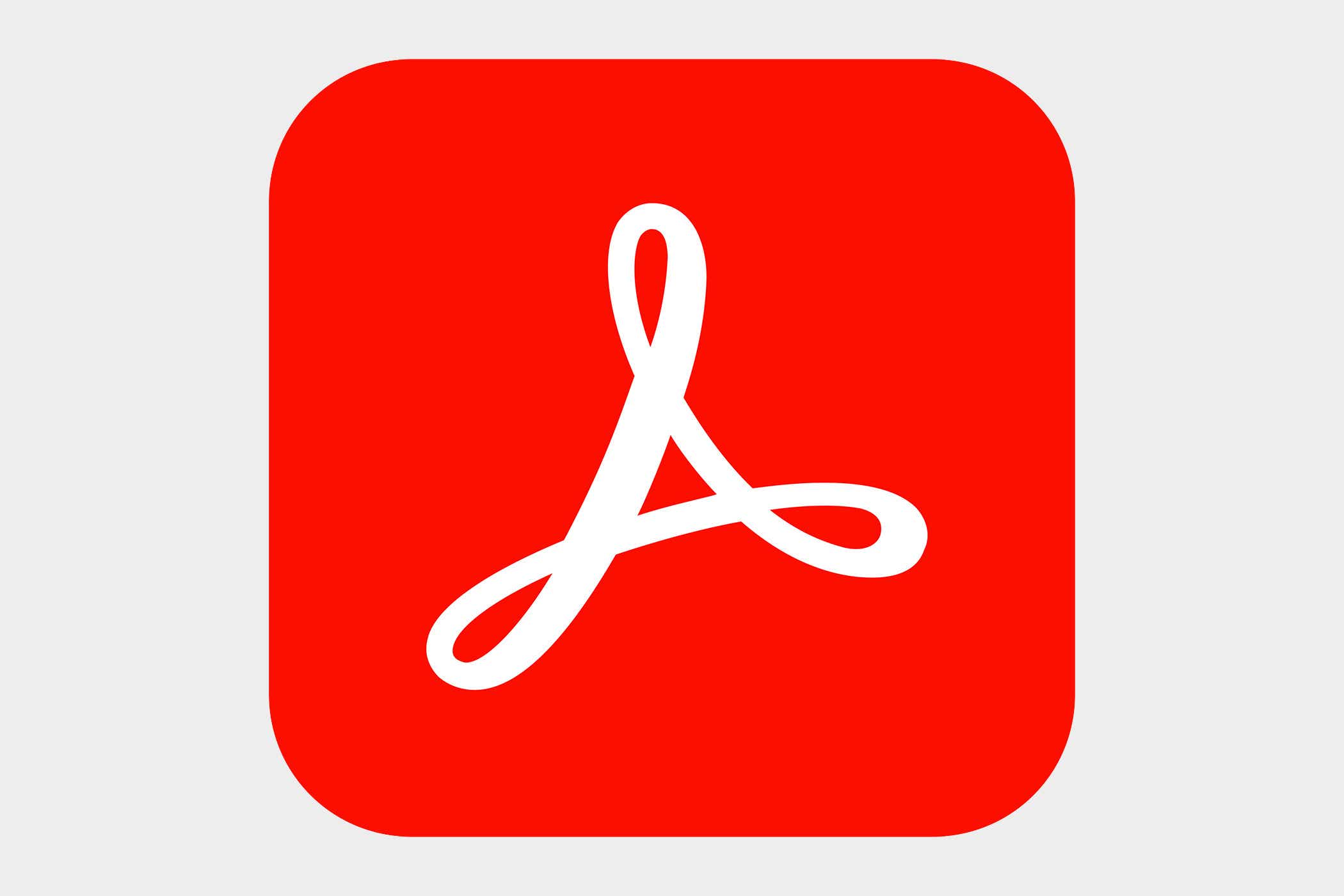
- Easily navigable tabbed interface
- Comprehensive PDF editing features
- Streamlined sharing feature makes it easier to fill documents and get signatures
- Rich feature set can be overwhelming for new users
Adobe Acrobat Pro remains the industry standard for good reason. Its rich combination of creation, editing, reviewing, and security features are mimicked by the best alternative options, but we feel Acrobat still does it best. Its recent interface redesign makes it much easier to navigate through its robust toolset than the nested menus of yore, and its cloud subscription option puts its advanced features within reach of more individuals and small businesses. (See how it compares to the Adobe Acrobat Standard .)
Though many of its features are available in other, cheaper PDF editors, Acrobat is still the editor against which all others are judged.
Foxit PDF Editor 13 – Best overall runner-up
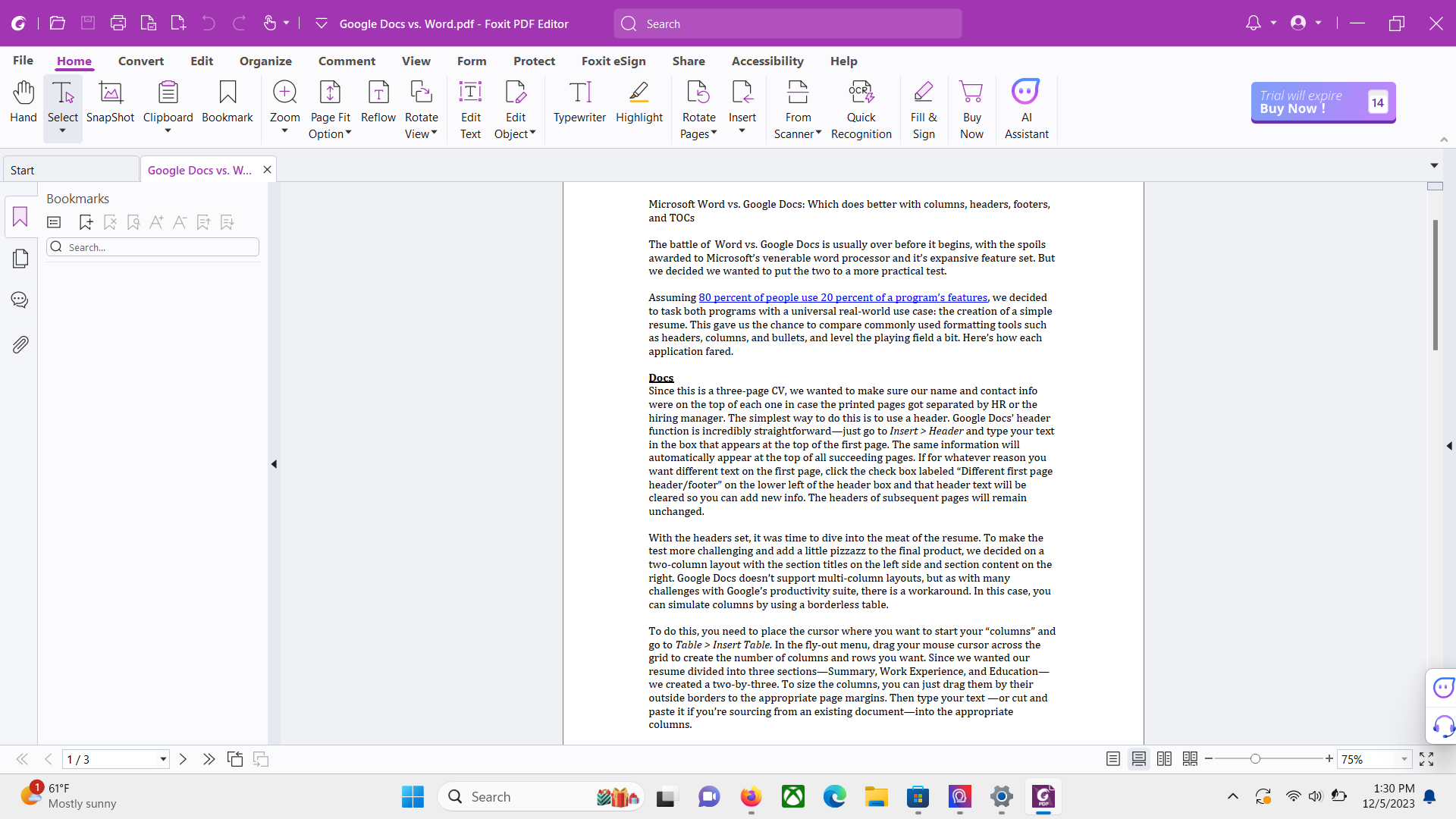
- Multi-platform
- Business-ready capabilities
- AI integration helps with document editing
- Can be expensive depending on product license
Foxit PDF Editor 13 hits all the right notes for a premium PDF editor and can even take on the formidable Adobe Acrobat. It’s packed with features that are sure to please power users—all the requisite content editing tools; review and markup features; form fill and signing support; and robust security options for sensitive documents, such as permissions, password protection, and data redaction. It supports tons of file formats, and adding hyperlinks, images, and files to a PDF is trouble-free.
Indeed, ease-of-use is one of Foxit’s great strengths. The program uses a Microsoft Office-style ribbon interface which groups tasks in a familiar and intuitive interface, making for a seamless integration with your workflow. It also provides ChatGPT integration so you can easily get help with your documents from an AI assistant. Yes, it’s priced on the higher side for a PDF editor, but with all it has going for it, Nitro PDF Pro more than earns its keep. Plus, you can try it out for free for seven days to see if you like it before making a commitment. If you’re looking for an Acrobat replacement, you won’t find many better.
EaseUS PDF editor – Best budget option
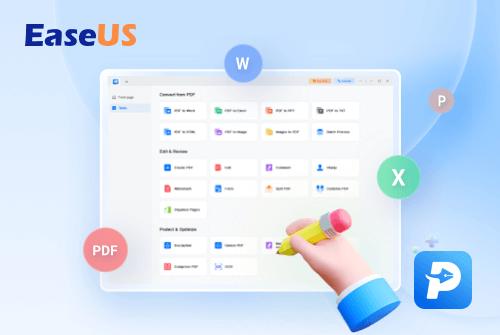
- Full set of editing tools
- Annotation options enable easy collaboration
- Straightforward interface
- Windows only
- Needs subscription to remove usage limits
EaseUs might not have the name recognition of some of the other editors on this list, but it’s more than capable of holding its own in the crowded PDF editor market. It provides all of the essential tools for managing PDF files without any of the elaborate or hard-to-understand features. It allows users to jump right in to their toolset and get straight to editing with only what they need.
While EaseUS’s features are great, they are also pretty standard fare among PDF editors. What makes it stand out is its affordable price—it’s a great value for those who regularly edit PDFs and don’t want to pay out the nose. EaseUS also offers a fully functional free version (with embedded watermarks on your edited documents) so users can take it for a spin to see if it meets their needs before they commit to paying any money.
PDF Candy – Best free option
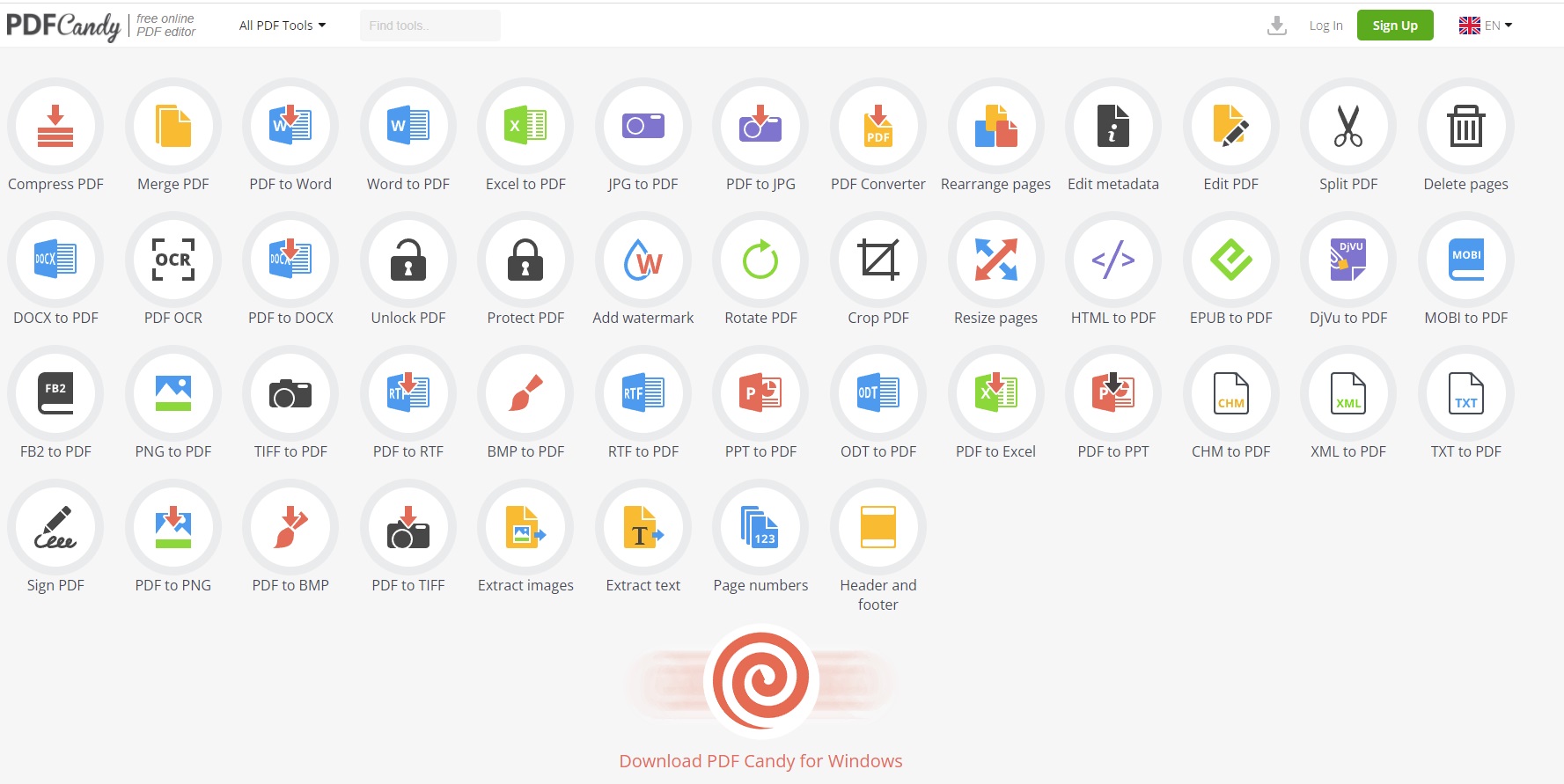
- Many advanced features
- OCR capability
- Very easy to use
- No Mac support
- Free trial only offers basic features
PDF Candy is the rare free PDF editor that offers a lot of the features you’d typically have to pay for. We’re talking scanning, multiple file-conversion options, and OCR functionality. All of this combines to make PDF Candy stand out among the multitude of lesser free PDF editors. It does have a bit of a wonky interface, but once you get the hang of it you’re off and running.
Unfortunately, while the free version has access to the expansive toolset of the paid version, you’re limited to one PDF task per hour. If you want unfettered access, you need to shell out $6 per month, or $48 per year.
PDF Expert – Best full-featured editor for Apple devices

- Syncs across Mac, iPhone, and iPad
- Comprehensive editing and annotation tools
- Simple, intuitive interface
- Requires annual payment
- Lifetime license enables use on Mac only
PDF Expert is an excellent editor that fits seamlessly into the Apple ecosystem, making it our pick for Macs, iPads, and iPhone users.
While macOS does include a PDF editor in its Preview app, iOS devices don’t have a native PDF editor and PDF Expert fills that gap nicely. It has a clean and intuitive interface and offers a plethora of easy-to-use editing options such as page management, converting scanned files into editable documents, and conversion to other file formats, among other things. The pricing plan is also considerably cheaper than most of the other top picks, meaning this is a no-brainer for Apple users.
Apple Preview PDF editor – Best free option for Mac users
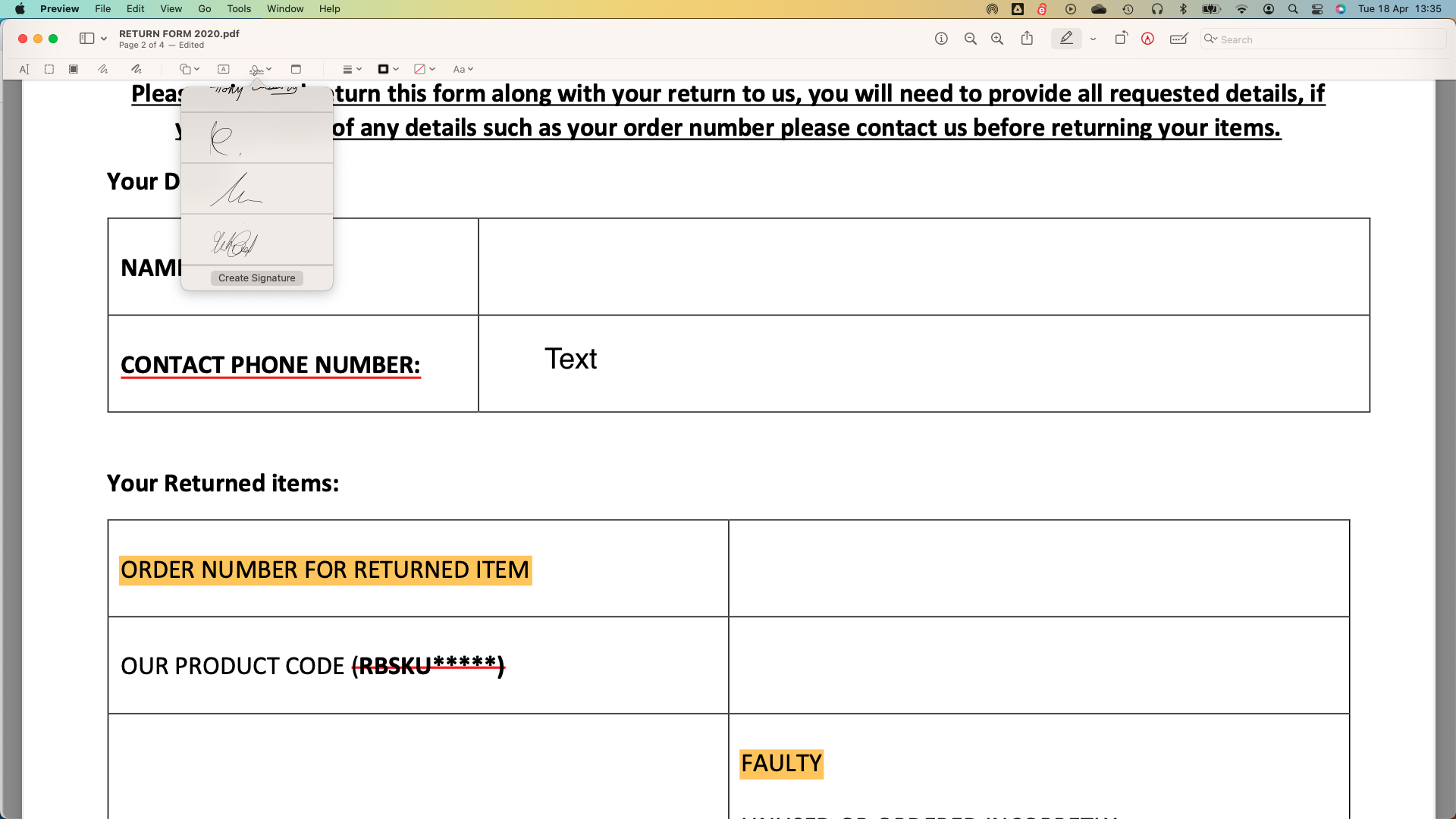
- Full set of PDF markup tools
- Supports form filling
- PDFs can be protected with passwords, encryption, and permission controls
- Limited native sharing options
- Only available to Mac users
Mac users needn’t look beyond the macOS for their PDF editing needs, since there is a full set of PDF markup tools already available at their disposal in Apple Preview. It has the chops to handle most personal and business PDF editing needs, including encryption, password protection, and permissions for files.
Apple Preview’s PDF features and capabilities are impressive and should be all you need for most common editing tasks. The drawback, of course, is that only Mac users can take advantage of them.
pdfFiller – Best web-based editor
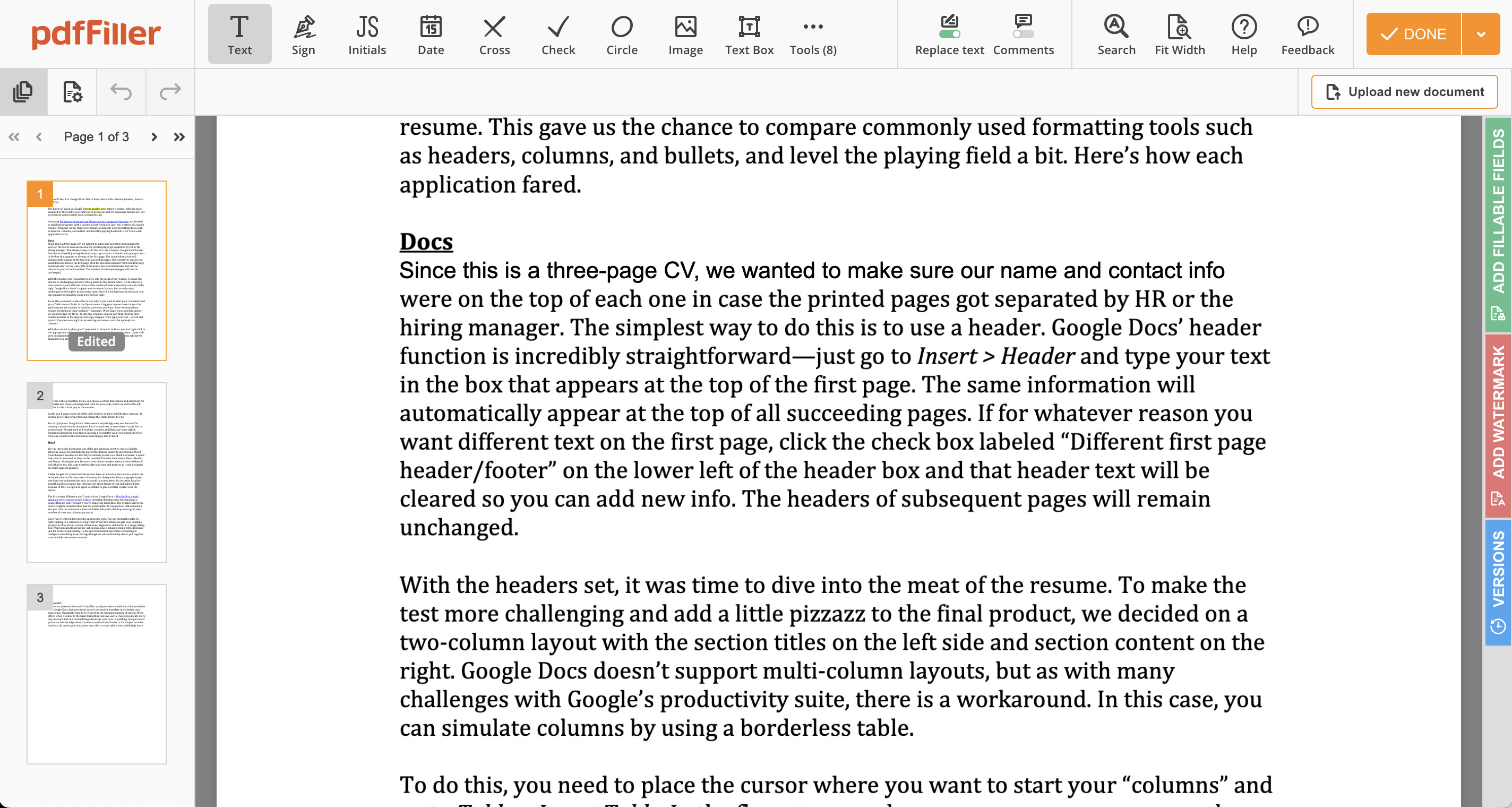
- Intuitive web-based interface
- Robust security options
- Lots of business-ready capabilities
- Business features won’t be needed by some users
- Requires annual commitment to get best value
pdfFiller is a browser-based PDF editor that allows you do to just about everything PDF-related—editing, securing, sharing, creating, and storing PDF files—all from its intuitive and simple web interface. Its design is similar to a desktop app, with the toolbar across the top, and document thumbnails along the side, so it’s very easy to select the page you want to work on and perform the desired function, be it adding, deleting, or copying/pasting text; changing font style, size, and color; and so on. A standard set of markup tools is also available. It has a surprisingly deep set of features for both personal and business use. For instance the Premium plan offers an impressive legal document library, as well as SignNow support.
While incredibly versatile, not all of pdfFiller’s advanced features will suit everyone. Fortunately, there are three subscription tiers, which gives users a way to meet their editing needs without paying extra for unnecessary features: Basic for $8/mo; Plus for $12/mo; Premium for $15/mo with an annual commitment. Month-to-month options are also available, but at a higher cost, of course.
A word about online PDF editors
Why spend a chunk of change on a desktop editor when free online PDF editors abound? The simple answer is because you get what you pay for. Generally, free online editors will let you add text and comments, merge and split documents, and convert files to and from PDF. With rare exception, however, they won’t let you edit existing text and many have file-size and page-volume restrictions. And a lot of them will watermark your edited document. For these reasons, web PDF editors are best reserved for simple, fast editing jobs. Call in these big dogs for anything more demanding.
What to look for in a PDF editor
PDF editors come in a variety of flavors, offering varying feature sets—from basic functionality to power-user tools. It’s important to know what features best match your workflow before you commit to a PDF editor.
Create, convert, and export PDFs
The most fundamental function of a PDF editor is to make PDFs, either from scratch, scanned hard copies, or by converting digital documents. A good PDF editor should be able to transform a variety of file types—from Microsoft Office formats to images to HTML—and do so seamlessly, preserving the original formatting. It should also include OCR technology to make the PDF text searchable and editable. Likewise, a good PDF editor must be able to export PDFs into other editable formats such as Microsoft Word and PowerPoint, HTML, or plain text, maintaining the original files hyperlinks, images, and other elements.
Content editing
Another bit of magic that PDF editors unlock is the ability to modify text; insert, resize, and move images; and reorganize pages in the PDF. A good one will perform these tasks as easily as in a text document or slide deck, allowing in-line editing, dragging-and dropping graphics, and adding or removing hyperlinks.
Review and annotate
A good PDF editor should also let you or anyone else using it add comments and other annotations to PDF files during review. It should have tools to mark up both text documents and graphic-heavy files like webpages. Common options include sticky notes, callout boxes, highlighting, freehand drawing tools, and stamps with messages like “approved,” “revised,” and “confidential.”
All businesses deal with documents containing sensitive data. Look for a PDF editor that includes security features that allow access for authorized eyes only. Good options will usually offer several levels of security, including password protection, permissions setting, and content redaction, which “blacks out” selected text and images. Most PDF editors will also offer one or more ways to electronically sign documents.
Mobile support
While deep PDF editing is best done on a desktop, it’s nice to be able to review and annotate files when you’re out and about. While PDFs can typically be reviewed in any PDF reader or editor, regardless of which one they were created in, consider looking for an editor that has a dedicated mobile app, is optimized for mobile devices, or allows cloud access to features through a mobile browser.
One of the great things about a PDF is that it can be read and edited in any PDF program regardless of which one it was created in. So beyond the features outlined here, let your personal preferences guide you in making your decision.
What is the difference between a PDF document and a PDF form?
While there are a number of different types of PDF file formats, they all fall under the umbrella term of PDF documents. A PDF form is a type of PDF document that has editable form fields a user can fill out. Typically, parts of the document are static and can’t be changed in a PDF form, such as questions in a survey or instructions about filling out the form. In a PDF form, the content fields a user fills out are open to editing and can offer a list of possible answer options or can be written in freely.
Are PDF documents and Word files different?
Yes. They are two entirely different document formats. While you can export from one file format to another, they are not the same. Word file formats are usually used for word processing, editing, and making changes to text. PDF documents on the other hand, are most often utilized for viewing, sharing, and printing. Additionally, Word files are read and write and contain some version of the “.doc” file format. Whereas PDF files are typically read-only and contain the “.pdf” file format.
Can you protect PDF documents from being edited by other people?
Yes. If you have a PDF document that you don’t want anyone else to edit, you can protect the file. You can do this by opening the file in Acrobat, for instance, and clicking Tools > Protect . Then you have a few options as to whether you want to simply restrict editing with a password, or if you want to encrypt the file for further safety. Once you choose how you want to protect the PDF document, you can set a password and save.
Can you merge PDFs with a free PDF editor?
As a matter of fact, many free PDF editors allow you to merge two or more PDFs into one document. Such is the case with our top free pick PDF Candy. Open up the PDF editor application or website in your browser and search for the Merge option. It will then ask you to add the files of all PDFs you wish to merge. Once the files have been added, arrange the page order and alignment before proceeding with the merge. Afterwards, all of your previously PDF files will be merged into one new PDF document.
Does Google have a free PDF editor?
Yes and no. Google doesn’t provide a designated free PDF editor itself, but there are third-party Chrome extensions that you can use to help get the job done. Alternatively, you can make use of Google Drive to edit a PDF document. Simply upload the document onto your Google Drive and then select the file and right-click and select Open with > Google Docs . The file will be opened as an editable Google Docs text document. Then just make your edits and when you’re finished click File > Download >PDF Document to revert it back to a PDF file.
This method is a quick and easy way to edit a simple PDF document, but be careful as Google Docs can run into formatting issues if your original document has complex visual formatting such as tables and graphs. In this case, it is best to use a designated free or premium PDF editor.

8 PDF Alternatives: Mobile-Friendly, Interactive & Trackable
Learn what are the best alternatives to PDF file format and why you can't afford to keep using PDFs if you hope to achieve your goals.

Dominika Krukowska
4 minute read

Short answer
What are the best alternatives to PDF?
While many opt for formats like ePub, MOBI, or DOCX, the best alternative to PDF is transitioning to an interactive web experience. It's mobile-friendly, engaging, and offers tracking capabilities.
This shift enhances user engagement and provides valuable insights that can be used to improve your content performance.
PDFs are stifling the potential of your digital content
You can’t be responsible for creating business content without having to make a PDF from time to time.
Why do we make PDFs?
Well, they look great for print. But most out readers read it on their computer. So why?
We do it because everyone does. But does that make it good? I venture to say it does not.
PDF looks good, but not as good as an interactive designed webpage. They were made for print, and not for reading online.
This means that PDF was always meant to be a static document, but no one reads printed papers anymore. We read online, on our computers, and increasingly on our phones.
Why deprive your readers of the immersive content experience online has to offer? Videos, animations, tabs, sliders, chat, live data, calculators, and more.
You may think your PDFs are working great, but how would you validate that? PDFs offer no analytics, but online alternatives do.
Dive into this post, and you'll discover the potential of interactive web content and save your readers from yet another frustrating PDF experience.
Let’s go!

Why are PDFs bad for business?
PDFs are engagement killers and information black holes. They offer a horrible reading experience on both desktop and mobile, and they are impossible to track, analyze, and improve.
But we regularly bear hefty costs for making these documents. It’s time to modernize.
1) Editing is a challenge
Adjusting content in a PDF isn't straightforward. It requires precision, and even small errors can mess up the layout.
2) Collaboration is frustrating
Trying to work on a PDF with your team at the same time? It's a bit of a juggle. PDFs aren't made for group edits.
3) Long content delivery time
When creating aPDF content writers rely on designers to put it all together. You can expect thousands of small revisions to aggregate into days, weeks, or even months.
4) Huge design costs
If you have an agency or a professional design your PDF the cost can become significant. For a 50-page report, the price can get to $15,000 .
5) Dull content experience
In an age of dynamic and interactive content, PDFs remain static and unchanging (pun intended). No videos, no animation, and no way to actively engage.
Here's an example of an interactive alternative to PDF:
6) Horrible mobile experience
Reading a PDF on a mobile device is hard work. It involves a lot of pinching to zoom in and out (and growling through clenched teeth).
But this does not have to be the experience you offer your audience. Web content is perfectly readable on mobile.
Here's mobile experience provided by PDF compared with an online web story:

7) Once sent PDFs can’t be changed
Sent your PDF then found out that there’s a typo? Too bad, it’s there forever. Be more careful next time. Need to update some stats? Sorry, send a new one.
With online content you control the final version. Any change you make to the document on your content platform will apply to the version you've sent out.
If you're using Storydoc then you can even make persinalized versions for a single document using dynamic variables without needing to create multiple duplicates.
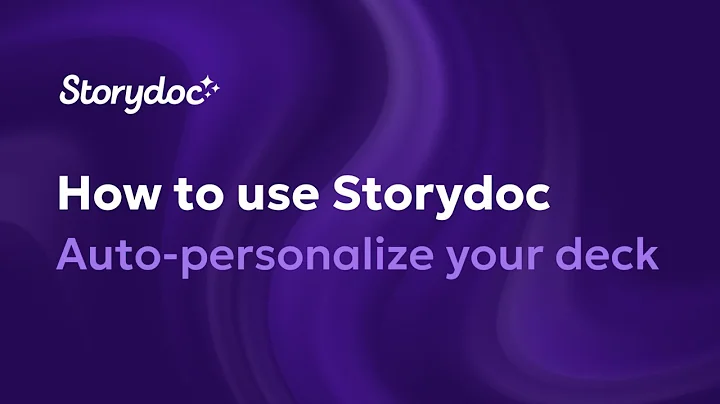
8) PDFs are information black holes
After sharing a PDF, there's no way to measure reader engagement. This lack of feedback prevents you from learning if you’ve done a good job and robs you of the opportunity to learn and improve.
You don't have to fly blind. With interactive web content you also get full visibility into how readers engage with your content .
With Storydoc you even get built-in instant analytics:

What are the best alternatives to PDF for business communication?
PDFs had a their time in the sun, but now there are fresh formats better suited for modern communication with modern audiences.
Even though, some formats are better than others in the context of business communication. So I took the liberty of ranking them for you from most to least effective.
Best PDF alternatives:
Storydoc: Storydoc is web content based on HTML/HTML5. It's incredibly versatile, ensuring content is accessible and consistent across different devices.
EPUB: A favorite for e-books and digital publications. It's adaptable, making reading on various screen sizes a breeze.
Flipbook: A dynamic digital version of traditional print publications. Flipbook format is perfect for creating engaging catalogs, magazines, or brochures online.
XPS: Microsoft's answer to PDF, it's integrated into Windows and offers similar features.
DOCX: Microsoft Word's format, it's widely used and offers rich text capabilities.
MOBI: Primarily used for Amazon's Kindle devices, it's another e-book favorite.
ODT: OpenDocument Text, an open standard format that's free and works seamlessly with various software.
RTF: Rich Text Format, a universal format that retains document formatting, making it compatible across different word processing programs.
The hard truth is that as long as you stick to PDFs or a PDF-like static content format you’re positioning yourself to lose your audience’s attention.
The real transformation happens when you transition to an interactive web experience. It's about crafting content that doesn't just inform but engages, resonates, and offers a two-way street of interaction.
What are the best tools for creating better documents than PDF?
Nowadays, the way we present information can be as impactful as the content itself. As we transition from static documents to dynamic, interactive experiences, to ace it, you need the right tools by your side.
Top platforms redefining the boundaries of content creation:
Storydoc : By transforming traditional slide decks into immersive web stories, Storydoc offers a narrative-driven experience. Its AI-enhanced design capabilities and a focus on engagement ensure that your content isn't just consumed but truly resonated with.
Pitch : A fresh take on presentations, Pitch emphasizes collaboration, speed, and design. It's tailored for teams, enabling them to share ideas seamlessly and with visual flair.
Genially : A platform that brings your content to life. Genially offers a range of tools to create interactive presentations, infographics, and more.
Beautiful.ai : Merging design with technology, Beautiful.ai offers an automated design process. It intuitively understands your content, ensuring your presentations are both informative and aesthetically pleasing.
Canva : A favorite in the design community, Canva offers an intuitive platform with a vast template library. From presentations to graphics, it provides the tools to make your content shine.
Visme : Tailored for visual storytelling, Visme provides a wide variety of high-quality images, dynamic charts, and interactive elements, making data presentation both insightful and engaging.
Interactive templates for business documents
Making the leap from traditional PDFs can be scary. But here's the good news: business document templates can make the transition easier, offering a structured yet customizable approach to interactive content.
Check out the library below and find the perfect fit for your next business document.

Hi, I'm Dominika, Content Specialist at Storydoc. As a creative professional with experience in fashion, I'm here to show you how to amplify your brand message through the power of storytelling and eye-catching visuals.

Found this post useful?
Subscribe to our monthly newsletter.
Get notified as more awesome content goes live.
(No spam, no ads, opt-out whenever)
You've just joined an elite group of people that make the top performing 1% of sales and marketing collateral.
Create your best presentation to date
Try Storydoc interactive presentation maker for 14 days free (keep any presentation you make forever!)
alternatives to book report
All Formats
Resource types, all resource types.
- Rating Count
- Price (Ascending)
- Price (Descending)
- Most Recent
Alternatives to book report

Book Report Project: Restaurant Menu ~ A Creative Alternative to a Book Report

Book in a Bag- A Unique Alternative to Book Reports

- Word Document File
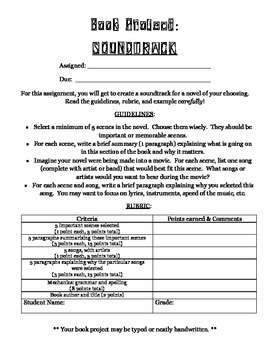
"Novel Soundtrack" -- Fun Alternative to Traditional Book Reports !

Memes- Define, Create, & Reflect - Alternative to Book Report - End of Year Act.
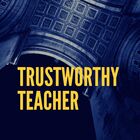
- Google Slides™

Alternatives to the Book Report

Anything-But-A- Book - Report ! An alternative to the traditional book report .

Paper Bag Character Study: Engaging Alternative to Book Report

Alternative to Book Report with Differentiated Instruction

Book Ring Animal Report - Engaging Alternative to Basic Informational Reports
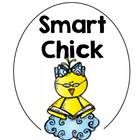
End of Novel Study For Any Story. Creative Alternative to Book Reports !

Multigenre Book Report : An Alternative to Powerpoints and Essays

ALTERNATIVES TO BOOK REPORTS
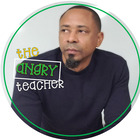
- Easel Activity
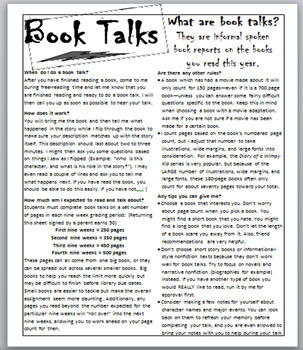
Book Talks - A Great Alternative to Book Reports and AR Tests

" Book in a Bag" -- Fun Alternative to Traditional Book Reports !

80 Alternatives to Book Reports

90 Alternatives to the Book Report

Creative Book Jacket Project: Fun Alternative to Traditional Book Reports

- Rich Text Format
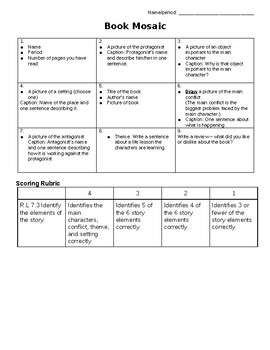
Silent Reading Book Assessments: Alternatives to the Book Report

SSR Alternatives to Book Report

Alternatives to Traditional Book Reports

Book in a Box...the alternative to (yet another) boring book report

20 Alternatives to a Book Report

Book Report Projects & Alternatives : 30+ Creative Activities, PPT for ANY Book !

The Lemonade War- Engaging & Collaborative Reports , Projects, & Activities!

- We're hiring
- Help & FAQ
- Privacy policy
- Student privacy
- Terms of service
- Tell us what you think
Create an account
Create a free IEA account to download our reports or subcribe to a paid service.
Global EV Outlook 2024
Background information.
The Global EV Outlook is an annual publication that assesses recent developments in electric mobility around the world. It is developed with the support of members of the Electric Vehicles Initiative (EVI).
Combining analysis of historical data with projections, now extended to 2035, the report examines key areas of interest, such as the deployment of electric vehicles and charging infrastructure, battery demand, investment trends, and policy developments, as well as what wider EV adoption means for electricity and oil consumption and greenhouse gas emissions.
The report includes analysis of lessons learned from leading markets, providing information for policy makers and stakeholders on policy frameworks and market systems that support electric vehicle uptake. This edition also features analysis of electric vehicle affordability, second-hand markets, lifecycle emissions of electric cars and their batteries, and grid impacts from charging electric medium- and heavy-duty trucks.
Two online tools will be made available alongside the report: the Global EV Data Explorer and the Global EV Policy Explorer, which allow users to interactively explore EV statistics, projections and policy measures worldwide.
Upcoming events
Workshop on renewables integration, oil market report - april 2024, appliance energy efficiency policy online training, gas market report - q2 2024, batteries and secure energy transitions, global summit on people-centred clean energy transitions, summit on clean cooking in africa, oil market report - may 2024, add to calendar.
- Apple Calendar
- Google Calendar
Subscription successful
Thank you for subscribing. You can unsubscribe at any time by clicking the link at the bottom of any IEA newsletter.

IMAGES
VIDEO
COMMENTS
Create a diary as if you were one of the characters from the story. 4. Make a time line of the events in your book. Draw pictures for major events. 5. Write an alternate ending - one that makes sense for the story line, but did not take place. 6. Design a quiz for the book you read, and an answer sheet as well. 7.
2. Create a commercial as a post-novel activity. A book commercial is a creative way to have students write about a book. It's different from a book report because the student is trying to persuade others to read the book, without giving away too much of the plot. By creating a short video, reluctant writers can share what they learned from the ...
Fifty Alternatives to the Book Report. Diana Mitchell. Students tire of responding to novels in the same ways. They want new ways to think about a piece of literature and new ways to dig into it. It is hoped that this diverse group of suggestions will whet the interest of students in exploring new direc-tions and in responding with greater ...
Think of it as a big digital hangout where they can talk about a book. Resources: 10 ways to use Wakelet's new collaboration feature. 12 curation ideas for students and teachers with Wakelet. Creating student blogs with Wakelet. 3. Record with Seesaw's creative canvas. Seesaw's creative canvas is like a big sketchbook.
Drawing will help students remember or find details. Then you can also ask them to highlight or copy the textual evidence for their illustrations. 2. An Alternative Ending: Asking students to create an alternative ending to a book -- one that makes sense -- pushes them to really demonstrate an understanding of characters and plot.
Book Report Alternative: Examining Story Elements Using Story Map Comic Strips. Comic frames are traditionally used to illustrate a story in a short, concise format. In this lesson, students use a six-paneled comic strip frame to create a story map, summarizing a book or story that they've read. Each panel retells a particular detail or ...
Book reports are a valuable tool for assessing students' understanding of independent reading, but writing report after report can become rote for students—and reading them can be equally tedious for educators. Fortunately, there are a plethora of alternative methods to accomplish the same goal. Take a look at these fun and effective alternatives to book reports and get your students (and ...
50 alternatives to the book report. Providing choices and alternatives to the "ways things are done around here" is not only a strategy for differentiating instruction but a way to encourage students to "show up" differently in the classroom and demonstrate new skills and competencies. This post at Sharing and Collaboration: English ...
Whatever the reason, it's time to think up some alternatives to those boring book reports. I've heard countless ideas from other teachers, and have even found a nice PDF of "50 Alternatives to the Book Report" by Diana Mitchell. There are some pretty good ideas there! But I decided to give you a quick list of my top favorite ...
10 Book Report Alternatives. The traditional book report format is definitely not my favorite. Forcing kids to write a summary and/or reflection about their book often feels dull…and, in my opinion, may sometimes lessen a student's love of reading. There are so many alternatives out there that are more engaging to consider (10 ideas listed ...
25 Book Report Alternatives. Interview a character from the book. Write a series of questions and answers from the protagonist or antagonist. You can even try focusing on a flat character. Write a diary or journal from the main character's point of view. This can be done in a physical format or through blog posts online.
5. Interview a Character. The main character of a book has a lot to share. Secondary characters do too. Choose a favorite character in the novel and interview them like one might for a magazine or news show. Write out questions and answers that show your understanding of the character. 6.
List of Alternatives to the Traditional Book Report (from various sources - compiled by Jennifer L. Bell) SCULPTURE. Create a sculpture of a character. Use any combination of soap, wood, clay, sticks, wire, stones, old toy pieces, or any other object. An explanation of how this character fits into the book should accompany the sculpture ...
2. Make online comic strips. Another successful book project was when the students created their own comics. Kids can get their graphic design on by using easy-to-learn (but beautiful) programs such as the Online Comic Creator by Read Write Think or Pixton.. You can pull this off in many ways, but I assigned comic summaries after every chapter.
Book reports and summaries are a thing of the past. Engage your middle and high school students with five book report alternatives that will leave them asking for more and, most importantly, building vital reading and analysis skills along the way. 1. Assign one pagers at the end of a novel. One pagers are engaging, allow for creativity, and lead to higher level thinking and analysis.
Your Sonlight Instructor's Guideis ready to walk you through each book it schedules, offering conversation prompts, comprehension questions, and cultural and historical context. 7 Book Report Alternatives. Beyond discussions, there are times when you may want a hands-on approach. These ideas can help.
Book reports: Twelve creative When book reports stand in the alternatives way of students' enjoyment of reading, it's time for teachers to. find a new way to find out if. NICHOLAS P. CRISCUOLO they've really read the book. OBSERVE grade Mrs. class. Everyone Castle's in the fourth room is reading, including Mrs. Castle. They all are engrossed in.
By John Spencer September 22, 2014 19 Comments. When I was a kid, I hated book reports. I hated filling out a form describing what I read. I wasn't a fan of artsy crafty alternatives, like cereal box projects or dioramas. What I did love, though, was geeking out on what I read. I loved arguing about who was better, what they should have done ...
1 Rating. 5.0. $3.00. PDF. This is a fun alternate to the traditional book report that I use with my students. Upon completing a book, students must bring in items relating to the book to share with the class. All items must fit in a brown paper bag that I distribute. There is a written explanation component as well.
Here is another great alternative to a traditional book report. "One Pagers" are a condensed version of the important aspects of a book that incorporates in-depth analysis and artistic/creative aspects. This can be used in literature circles, novel studies or with short stories.Your students will:- Make and explain text connections with supporting evidence/examples- Select and explain ...
Price When Reviewed: $19.90/mo I $239.88/yr. Best Prices Today: $239.88 at Adobe. Adobe Acrobat Pro remains the industry standard for good reason. Its rich combination of creation, editing ...
For a 50-page report, the price can get to $15,000. 5) Dull content experience ... Best PDF alternatives: Storydoc: ... EPUB: A favorite for e-books and digital publications. It's adaptable, making reading on various screen sizes a breeze. Flipbook: A dynamic digital version of traditional print publications.
This is a book report alternative project based on differentiated instruction. Students get to choose one of five different formats to demonstrate their knowledge on a book they have read. You will get the project as a .PDF file and as an .ODT file (Open Office) compatible with most word-processing software. Targeted for 5th through 10th grade.
PitchBook-NVCA Venture Monitor First Look. April 2, 2024. Venture still waiting for its revival. Two large tech IPOs are already out the door, and two more, Ibotta and Rubrik, have dropped their S-1 filings in an encouraging sign for 2024 venture exit activity. On the dealmaking side, valuations ticked back up in Q1, driven in part by the ...
April 1, 2024. March wrap-up: One month in global markets. Our latest Global Markets Snapshot breaks down a month of trends in the equity, debt, and commodities markets, tracking returns across a range of indexes and sectors. It also features private market activity, including major deals, fundraising, IPO performance, lending volume, and ...
The Global EV Outlook is an annual publication that assesses recent developments in electric mobility around the world. It is developed with the support of members of the Electric Vehicles Initiative (EVI). Combining analysis of historical data with projections, now extended to 2035, the report examines key areas of interest, such as the deployment of electric vehicles and charging ...